Creating a stylish and functional TV room involves balancing comfort, aesthetics, and technology. From integrating the screen into custom built-ins to choosing the right color palette and seating arrangement, each design choice can enhance viewing pleasure and overall ambiance. This article presents 20 inspiring TV room ideas—ranging from minimalist approaches to luxurious lounges—empowered by expert tips on lighting, storage, acoustics, and decor. Whether you’re working with a compact space or a sprawling media den, these concepts will guide you toward a cohesive, inviting environment that puts your entertainment at center stage without sacrificing style or comfort.
1. Built-In Shelving Surround
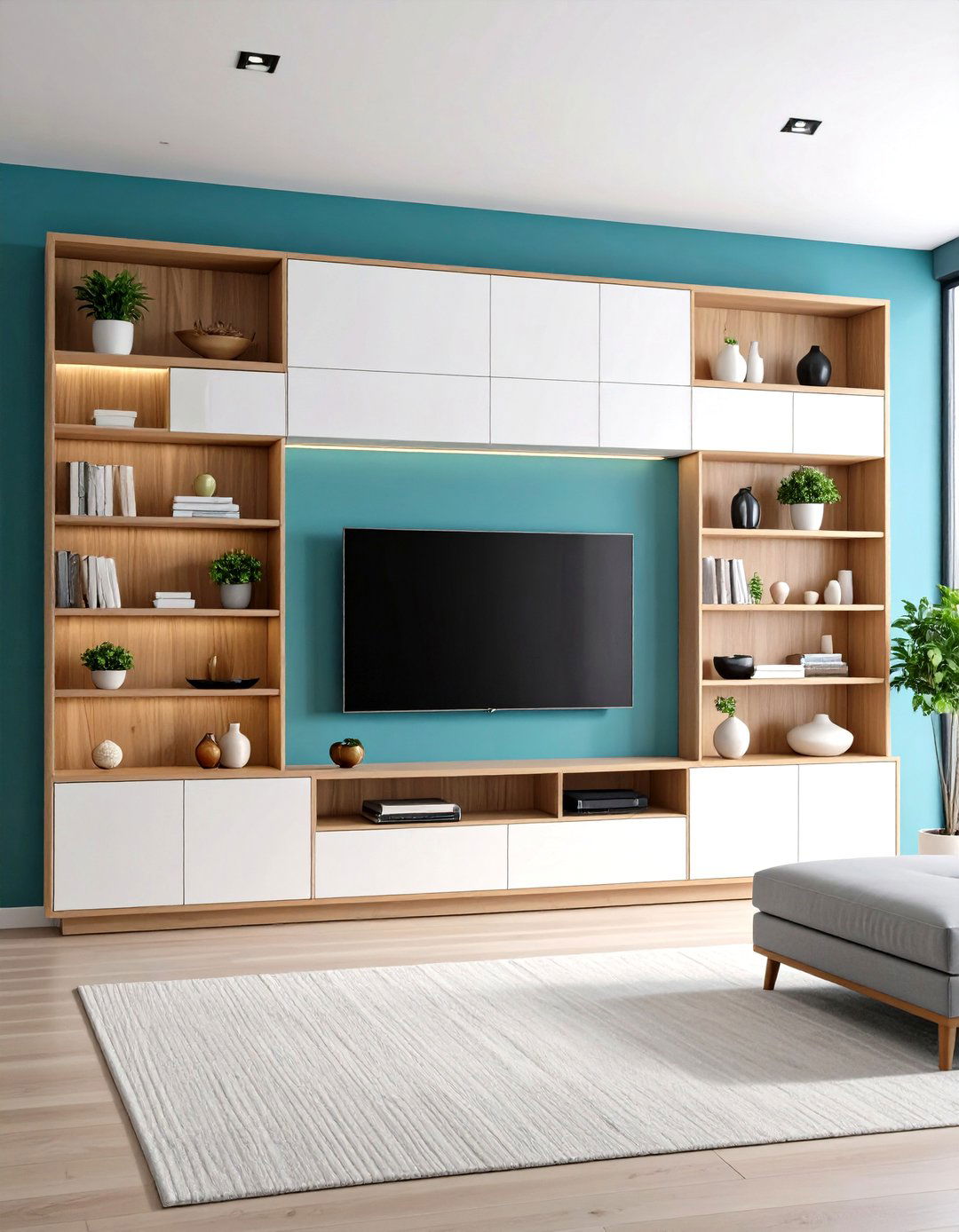
Custom built-in shelves framing the TV create a seamless focal wall that houses equipment, décor, and books. By recessing the television within cabinetry or open shelving, the room feels organized and intentional, with hidden wire management maintaining clean sightlines. Lighting integrated into the shelves—such as LED strips or puck lights—adds depth and highlights décor items without causing screen glare. Opt for adjustable shelving heights to accommodate components, and consider closed cabinets below for media storage. This approach elevates the TV to a curated display rather than a standalone device
2. Dark Accent Walls
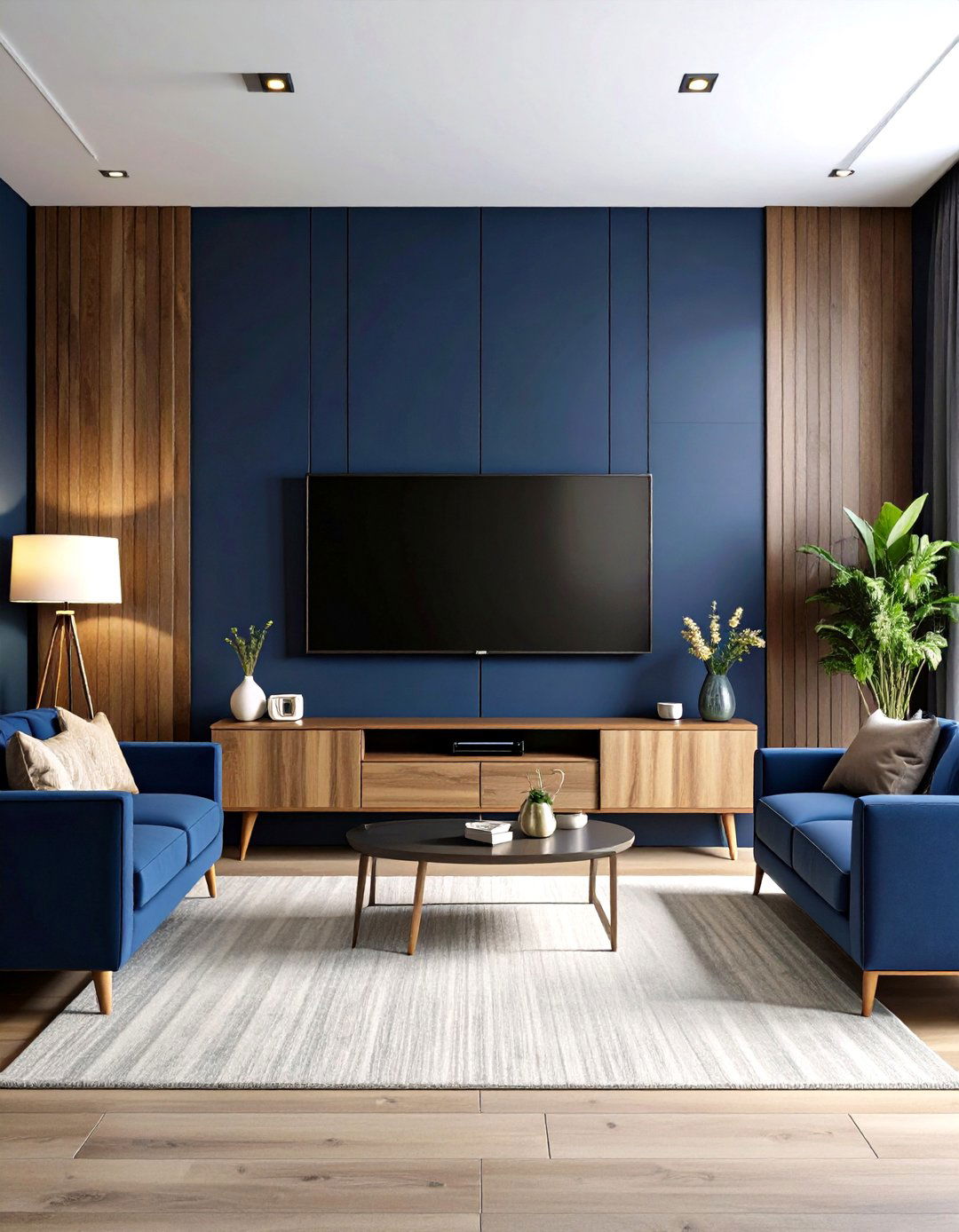
Painting the TV wall in a deep charcoal, navy, or forest green helps the screen blend into its background when off, minimizing its visual impact. Dark colors absorb light, reducing glare and enhancing contrast on-screen. To keep the room from feeling cave-like, balance the dark wall with lighter furnishings and ample ambient lighting—floor lamps, recessed ceiling lights, or wall sconces. Textured paint finishes or wallpaper with subtle patterns can introduce interest without overwhelming the space. This strategy turns the TV wall into a deliberate design statement rather than an afterthought
3. Gallery Wall Integration
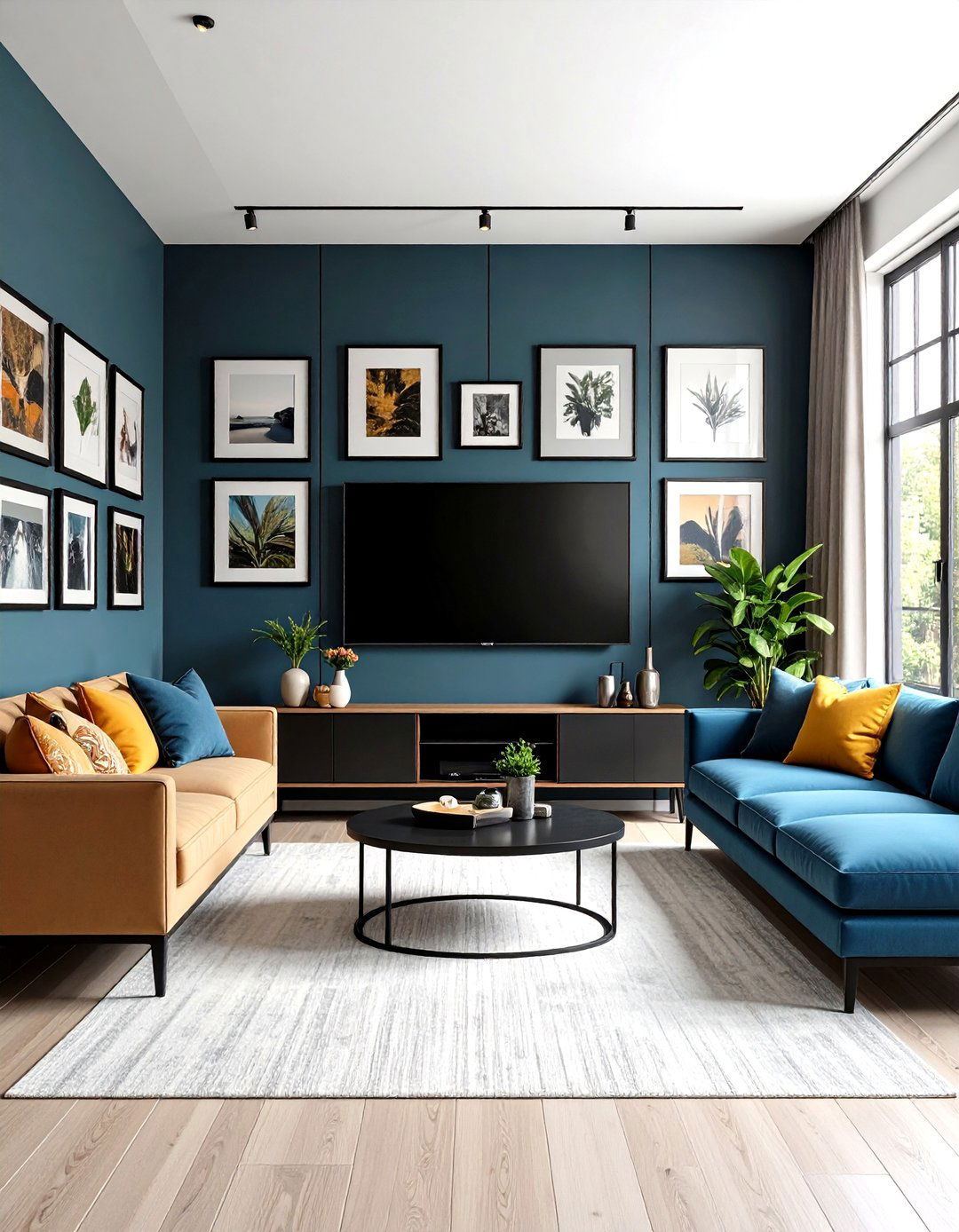
Surrounding the TV with framed artwork and photographs creates a gallery-like arrangement that camouflages the screen. Maintain consistent frame styles and spacing to achieve a cohesive look, and use mats in neutral tones to unify diverse artwork. Position the TV at the center of the composition, ensuring eye-level viewing, and incorporate a mix of horizontal and vertical pieces to balance the layout. This method transforms the wall into an art feature, making the television one component of a broader visual story rather than the sole focal point
4. Minimalist Floating Console
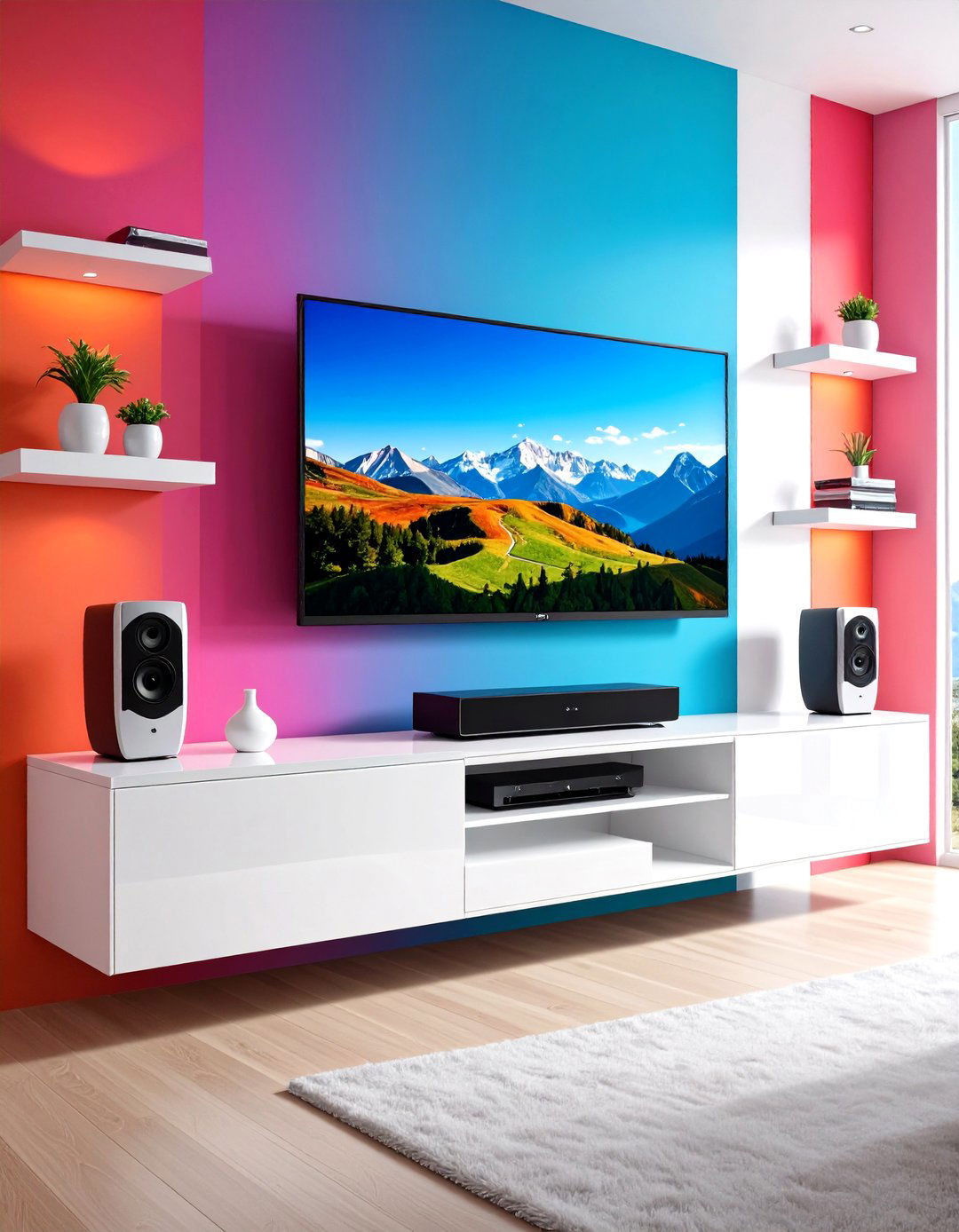
A sleek floating media console beneath a wall-mounted TV supports a minimal aesthetic. By suspending the console off the floor, you create an illusion of expanded space and simplify cleaning. Choose a low-profile design with concealed compartments for remotes, consoles, and cables to preserve a clutter-free environment. Materials like lacquered MDF, natural wood veneer, or glass offer varied stylistic expressions. Pair with a discrete soundbar mounted just below the screen to maintain clean lines and unobstructed sightlines, reinforcing the minimalist ethos
5. Cozy Corner Nook
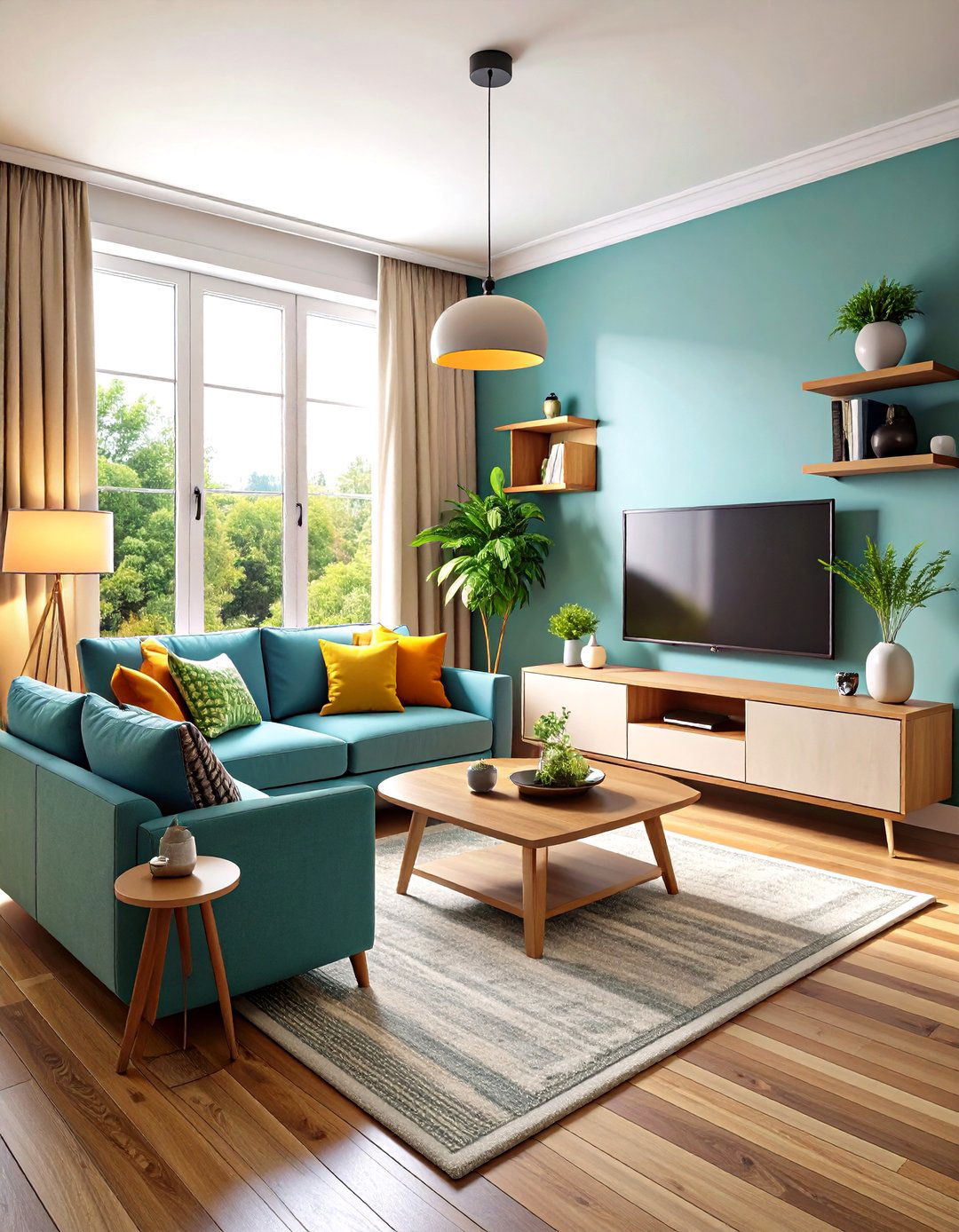
For small or irregular rooms, situating the TV in a corner can maximize floor space and foster an intimate viewing nook. Anchor the corner with a low-profile TV stand or custom-built cabinet that follows the wall’s angle. Install floating shelves on adjacent walls for books and decorative accents. Surround the seating area with plush textiles—throw pillows, faux fur blankets, and area rugs—to enhance coziness. Strategic use of corner sconces or floor lamps ensures sufficient lighting without encroaching on the central viewing zone
6. Movable Panel System
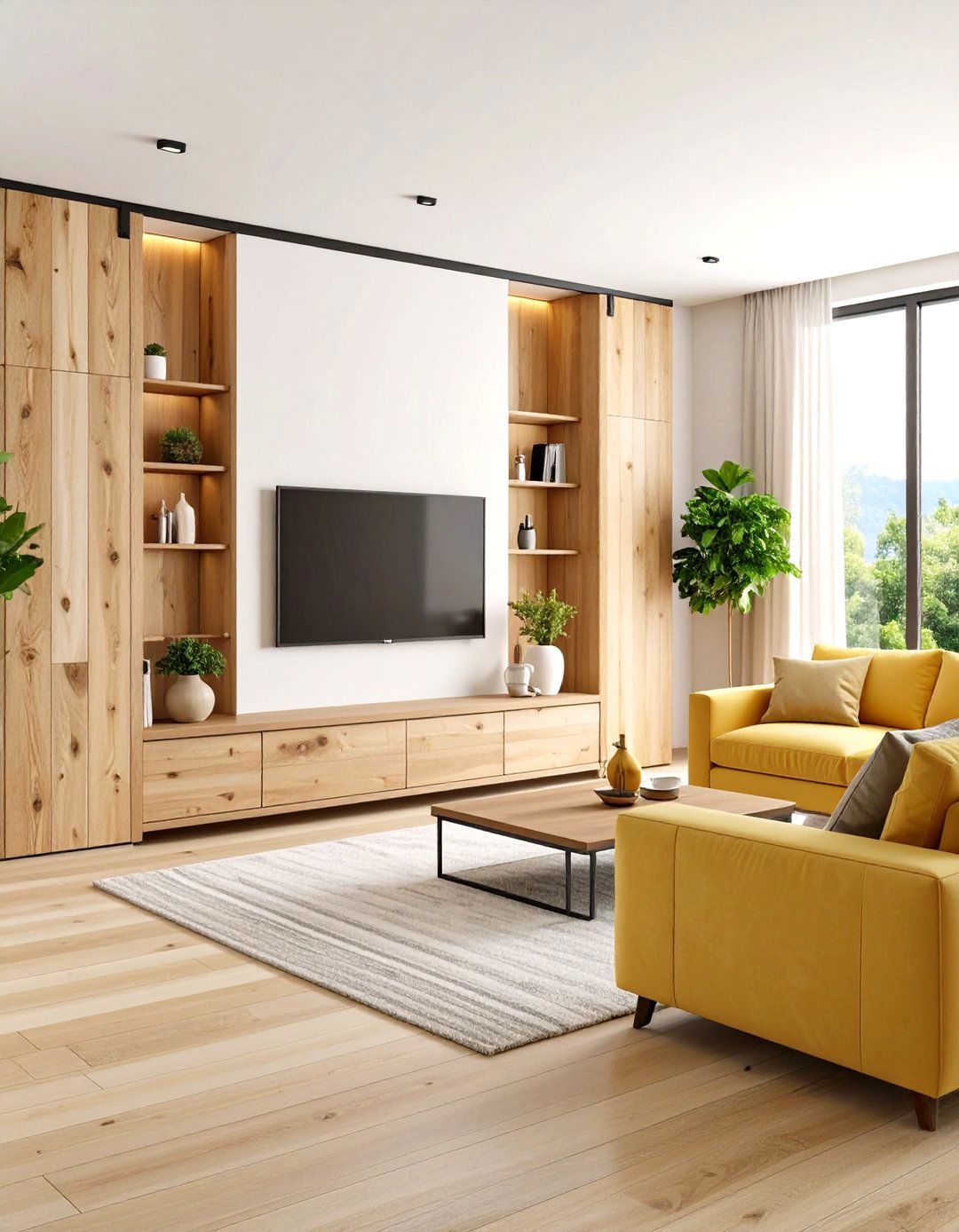
Sliding panels or room dividers that conceal the TV when not in use offer flexibility in multi-purpose spaces. Panels can be clad in decorative finishes—barnwood planks, upholstered fabric, or mirror—to match the room’s decor. When closed, the system transforms the wall into a seamless surface; when opened, the TV reveals itself. This solution accommodates open-plan layouts, allowing the TV area to be hidden during entertaining or work sessions, preserving the room’s aesthetic integrity
7. Integrated Fireplace Mantel
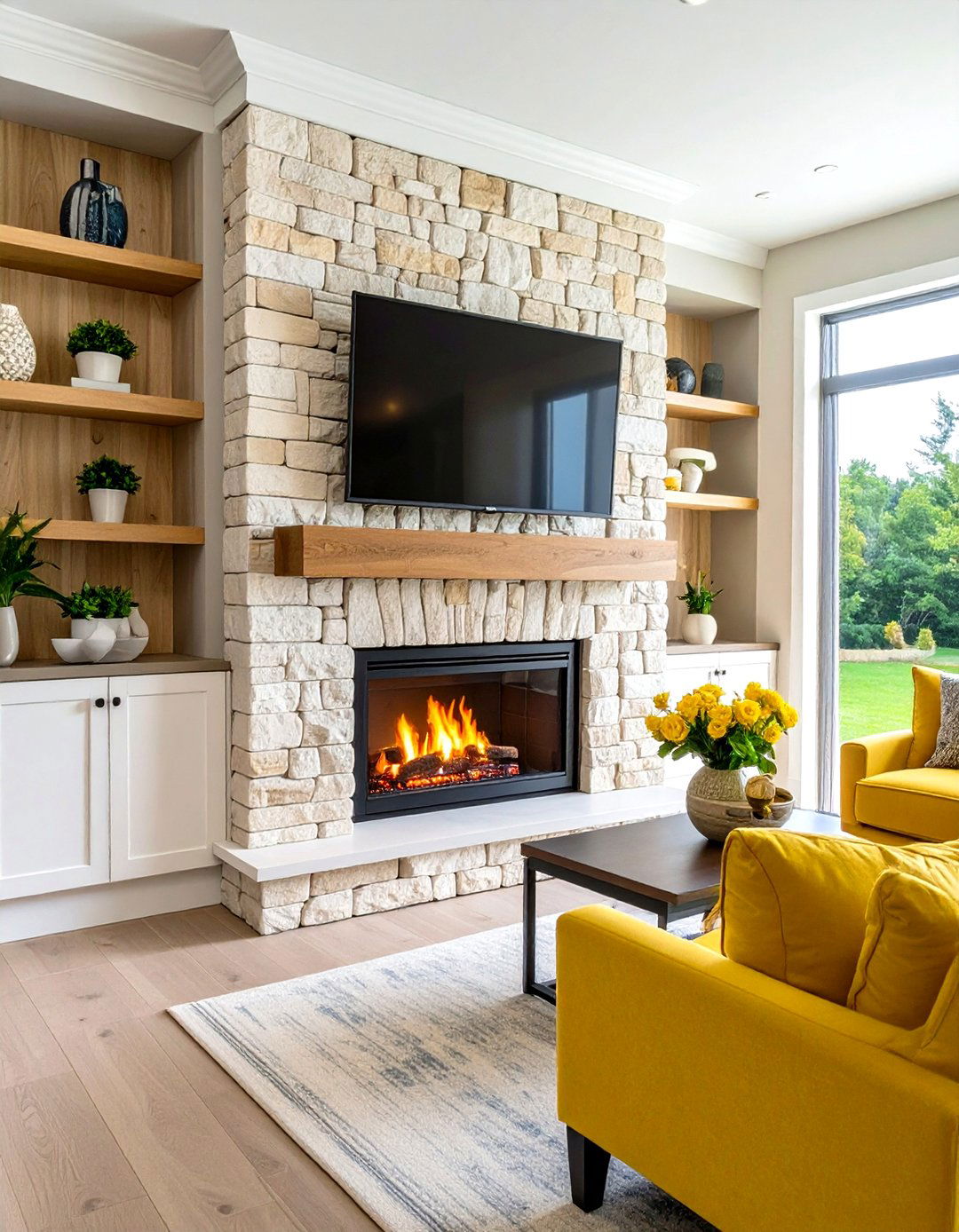
Combining the TV with a fireplace mantel creates a dual focal point that balances warmth and entertainment. Position the television above a low-profile mantel of stone, brick, or reclaimed wood. Ensure proper heat shielding and ventilation to protect electronics. The mantel shelf provides a ledge for decor—candlesticks, art, or greenery—while built-in niches on either side can house logs, speakers, or shelving. This classic approach lends a cozy, lodge-like feel to the TV room
8. Hidden TV Cabinet
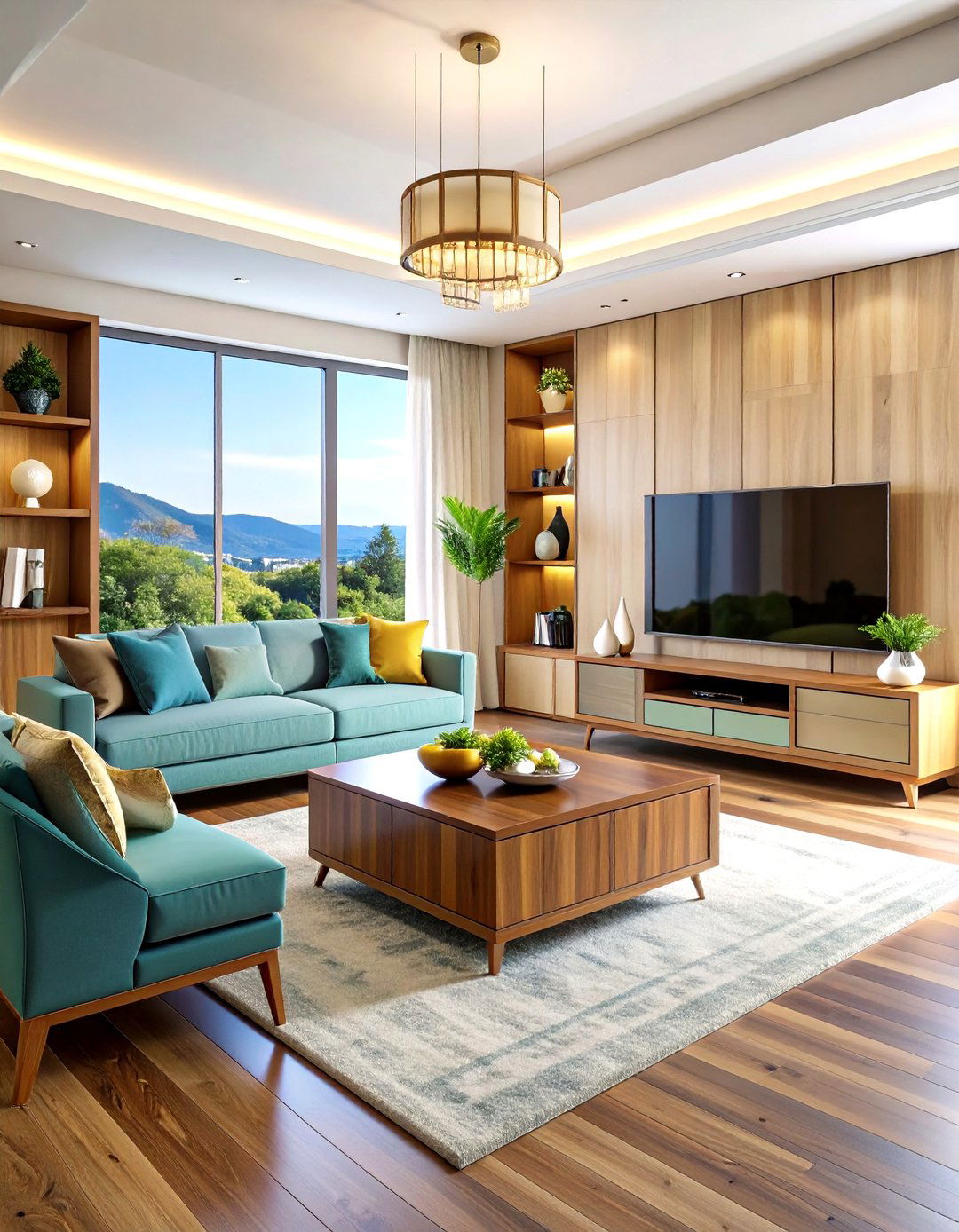
A motorized lift cabinet conceals the television within furniture when idle. At the push of a button, the TV rises into view; otherwise it remains hidden behind doors that can be styled like any other media console. This high-tech option preserves a traditional living-room look and protects the screen from dust. Choose finishes—such as painted wood or mirrored glass—that harmonize with the room’s palette. It’s an elegant solution for those who prefer a classic decor without a constant screen presence
9. Accent Lighting Backdrop
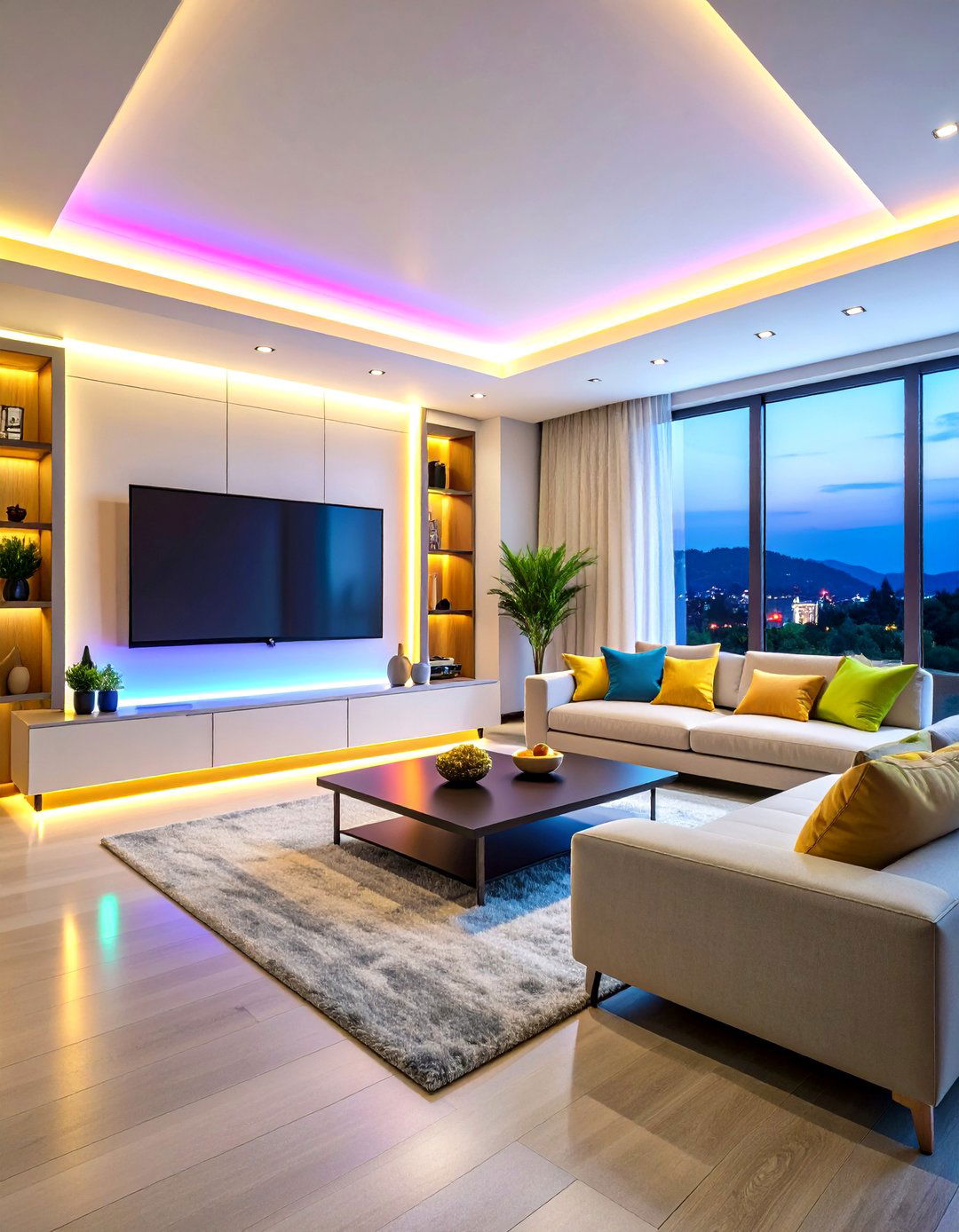
LED backlighting installed around the TV creates a halo effect that reduces eye strain and enhances perceived contrast. Color-changing LEDs can be synchronized with on-screen content or set to ambient tones, adding drama and immersion. For a refined look, recess the LEDs into a shallow channel behind a floating frame or shelf. This perimeter glow turns the TV wall into an ambient lighting feature, blending technology with mood-setting illumination
10. Retro Revival Lounge
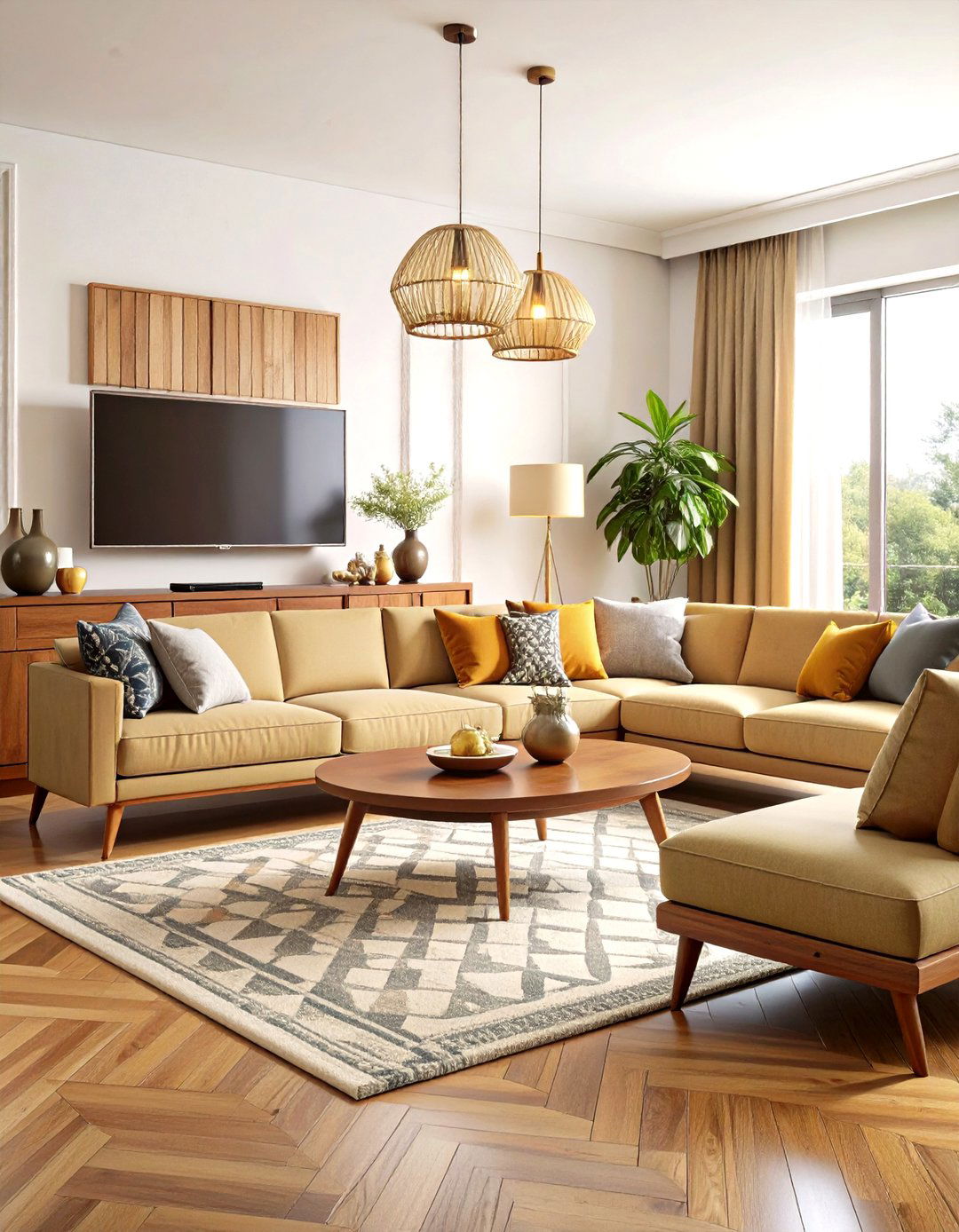
Incorporate mid-century modern furnishings—low-slung sofas, tapered-leg coffee tables, and geometric rugs—to evoke a retro vibe. A vintage-inspired media console with walnut veneer complements classic CRT silhouettes or modern flat screens. Add period-appropriate accents: rotary dial coasters, sculptural lamps, and brass hardware. This nostalgic approach blends old and new, giving the TV room character while ensuring the latest streaming devices remain discreetly stored
11. Modular Seating Arrangement

Sectional sofas with adjustable modules adapt to various seating configurations—perfect for families or hosting game nights. Choose pieces that can be reoriented: chaise lounges that convert to benches, corner units, and ottomans. Upholstery in performance fabrics withstands spills and wear. Arrange modules in a semi-circle around the TV to promote group viewing or flex into an open lounge for conversation. Incorporate side tables on casters for easy repositioning and personal surfaces
12. Greenery and Natural Textures
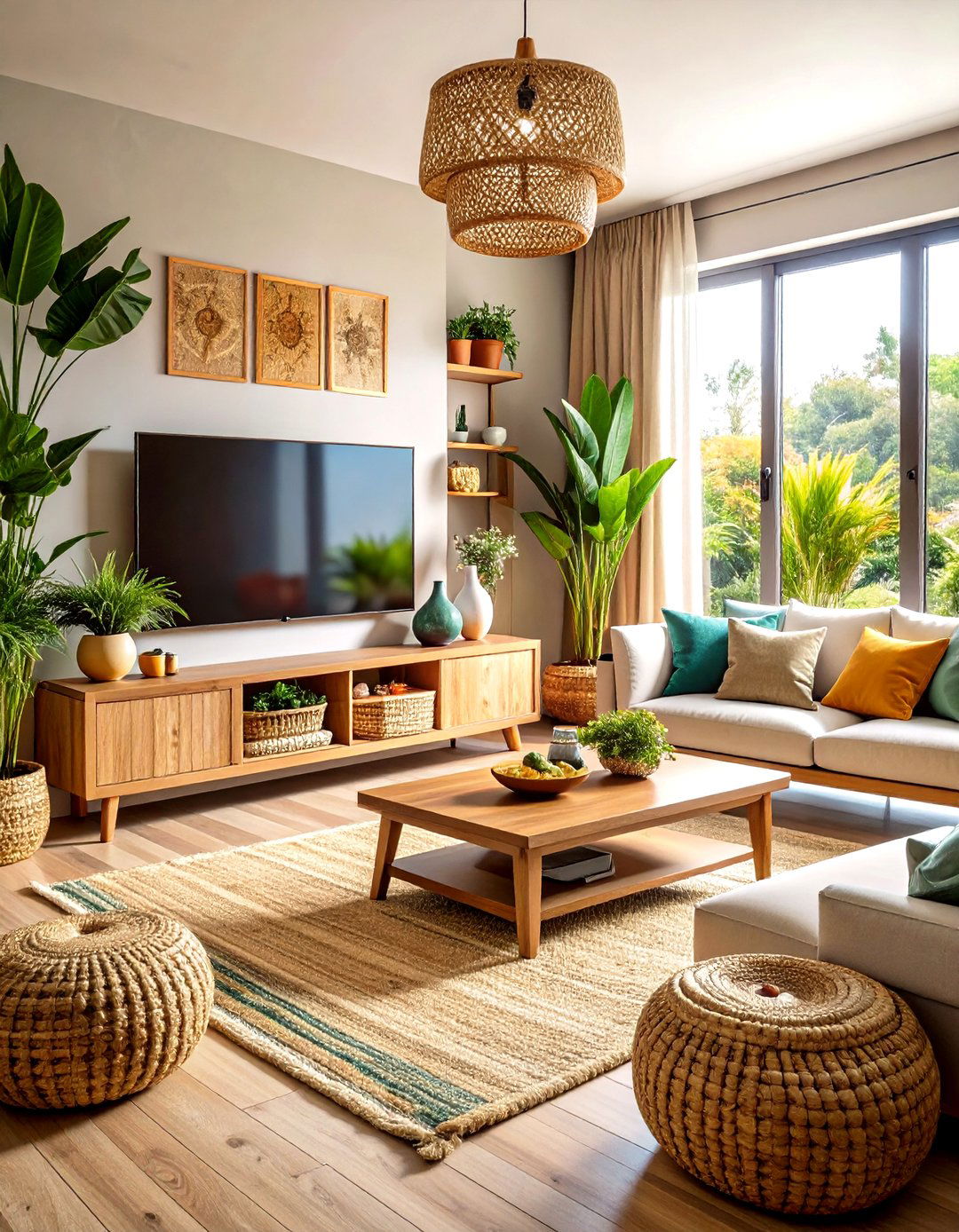
Introducing plants and natural materials softens the technology-focused space. Position tall potted palms or fiddle-leaf figs beside the TV to add vertical interest and improve acoustics. Woven seagrass baskets can conceal remotes or controllers, while wooden accent pieces—trays, bowls, or shelves—bring warmth. Natural jute rugs and linen pillows enhance texture without overwhelming the sleek TV components. This blend of tech and nature creates a calming, balanced environment
13. Wall Niche Recess
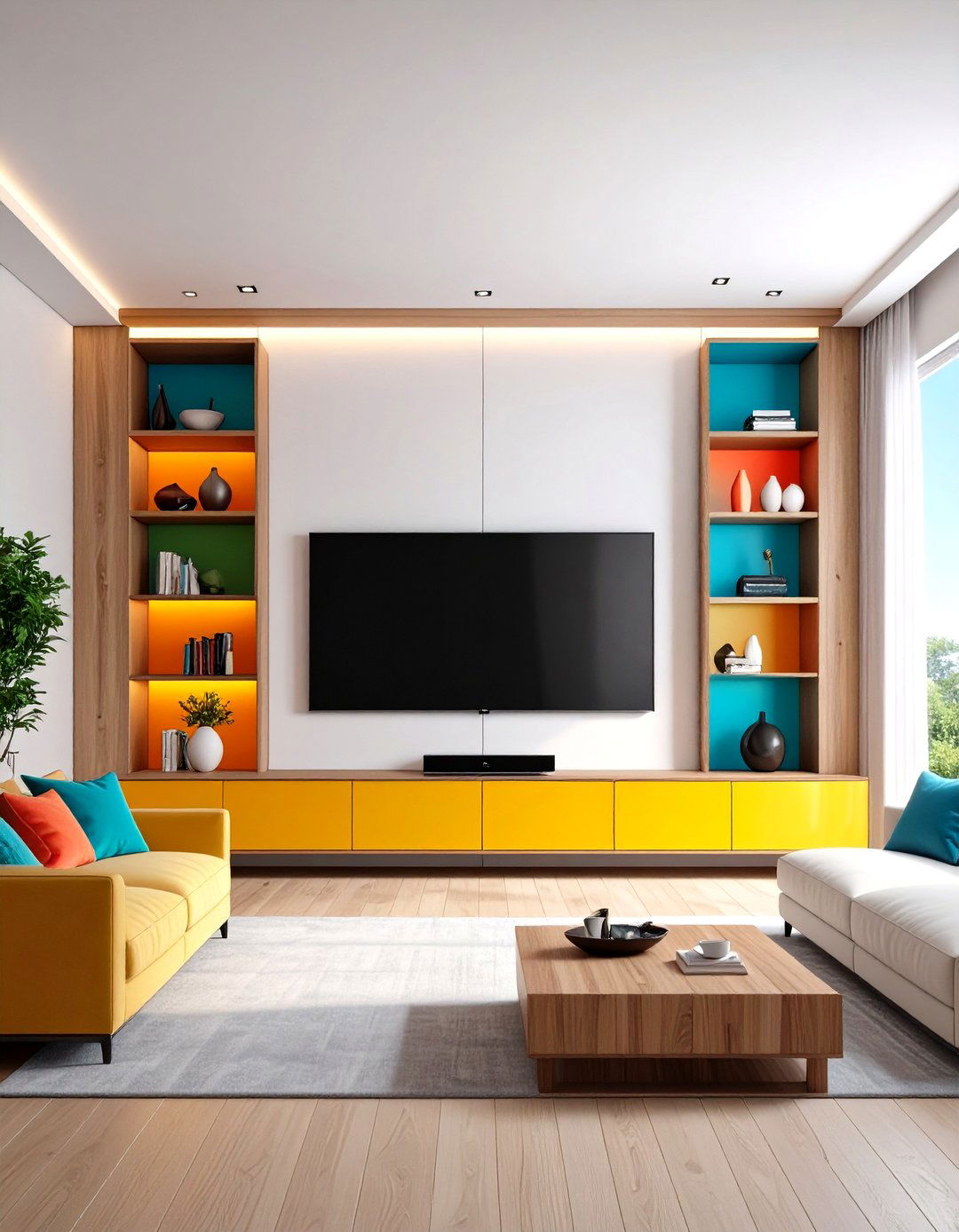
Recess the TV into a drywall niche for a flush-mount installation that preserves wall space. Frame the niche with contrasting trim or tile to define the feature. Inside the niche, add a slim shelf below the screen for soundbars or console controllers. The recessed approach hides wires within the wall cavity, maintaining a seamless surface. It’s particularly effective in narrow rooms where protruding TVs would impede traffic flow
14. Art-Frame TV
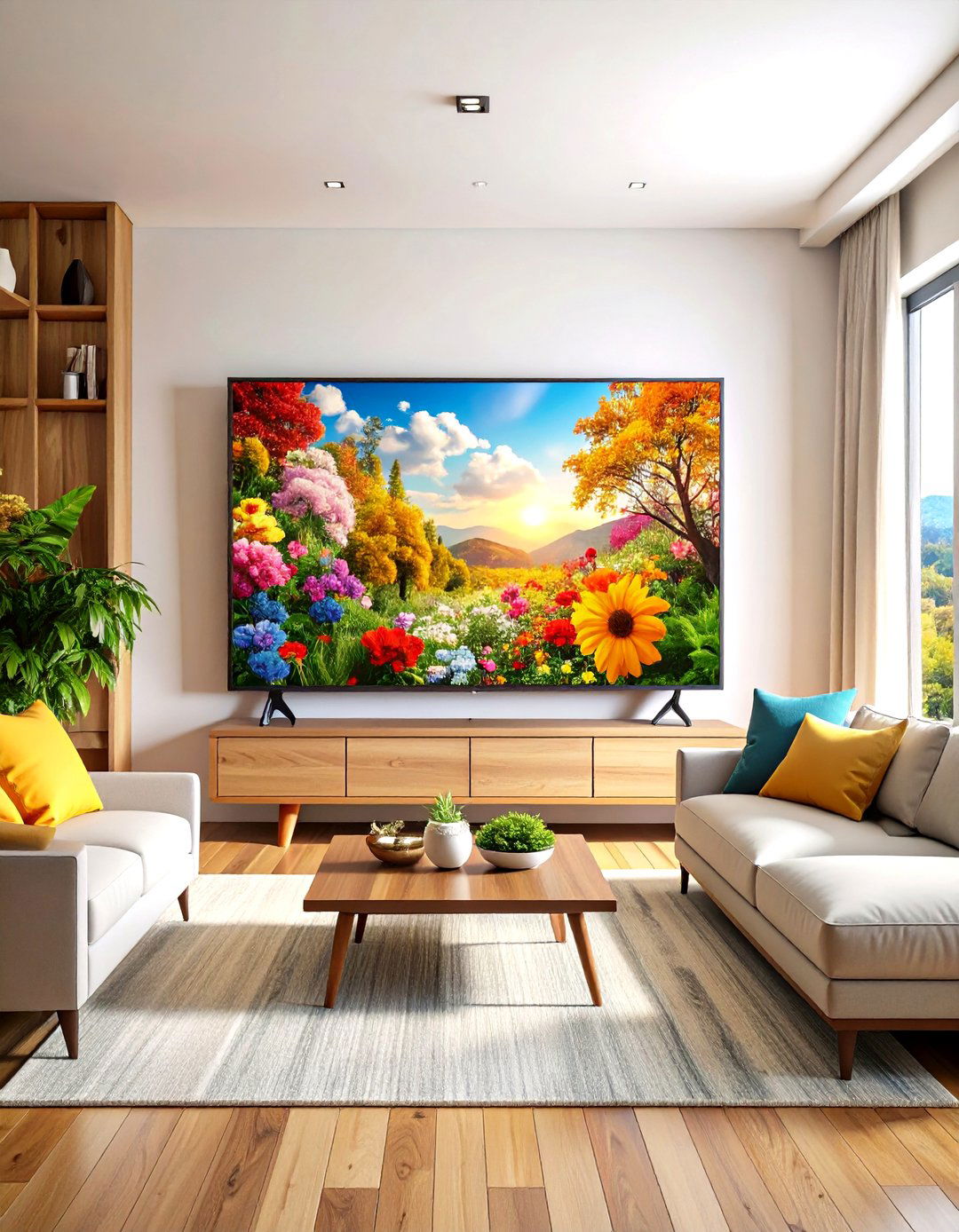
The Frame TV concept disguises the screen as artwork when not in use. When held by a bezel that matches your decor—wood, metal, or matte finishes—the television transforms into a gallery piece. Select custom artwork or family photos to display digitally. This framable technology integrates the TV into living areas or open-plan spaces where traditional media walls would clash with design continuity
15. Luxe Velvet Seating
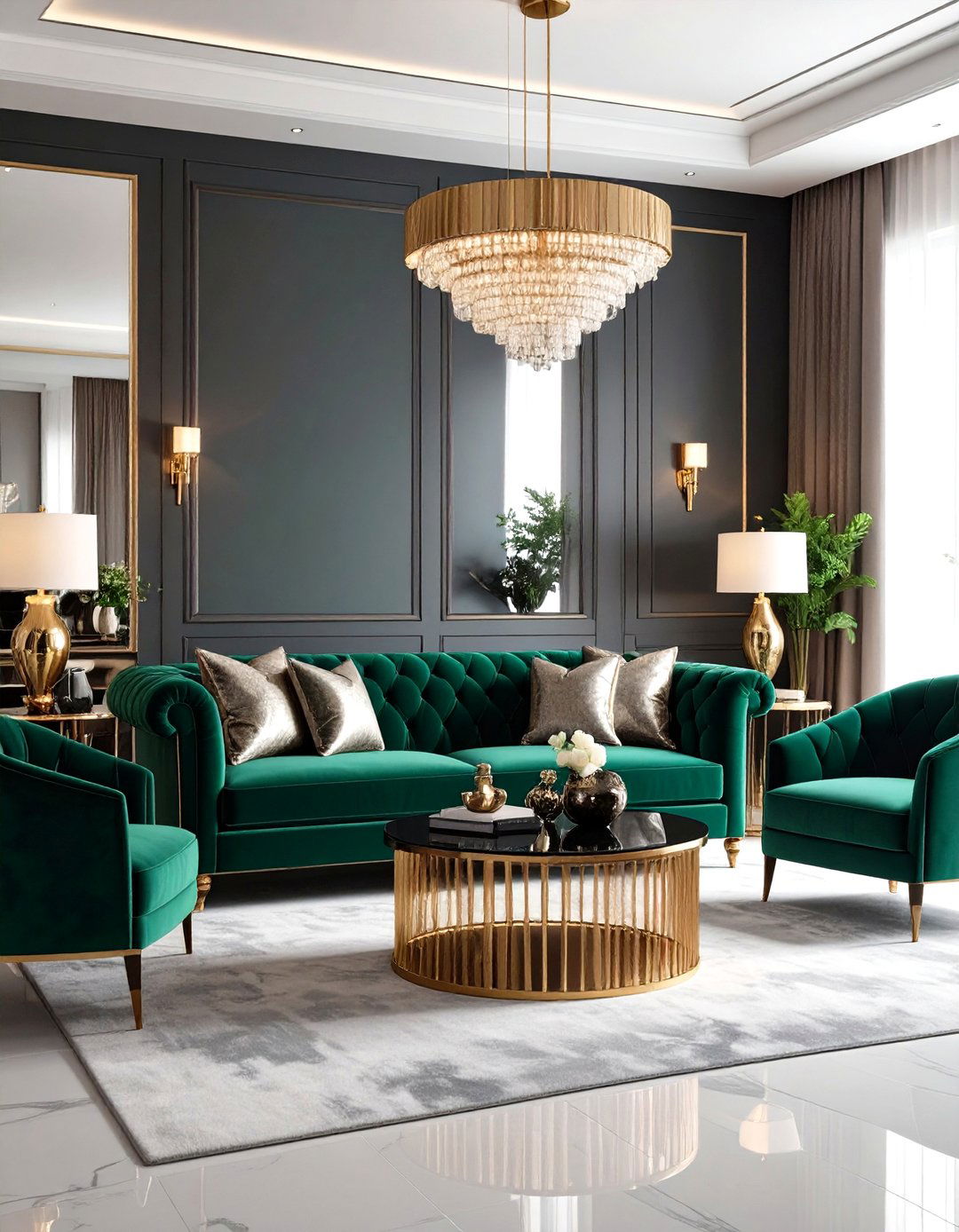
Upholster seating in sumptuous velvet—emerald, sapphire, or ruby tones—for a touch of Hollywood glamour. Deep-buttoned sofas or wingback chairs create luxurious viewing thrones. Pair with metallic side tables and mirrored accents to reflect light. This opulent design choice turns movie nights into red-carpet events, while the plush fabric enhances comfort and acoustics by damping sound reflections
16. Projector and Screen Combo

For a true cinema experience, replace the flat screen with a retractable projector screen. When raised, the room reverts to a multipurpose space; when lowered, a high-lumen projector delivers an expansive image. Install ceiling-mounted speakers for surround sound and blackout drapes to control ambient light. This setup frees the TV wall for art or windows, optimizing the room’s functionality
17. Acoustic Paneling Walls
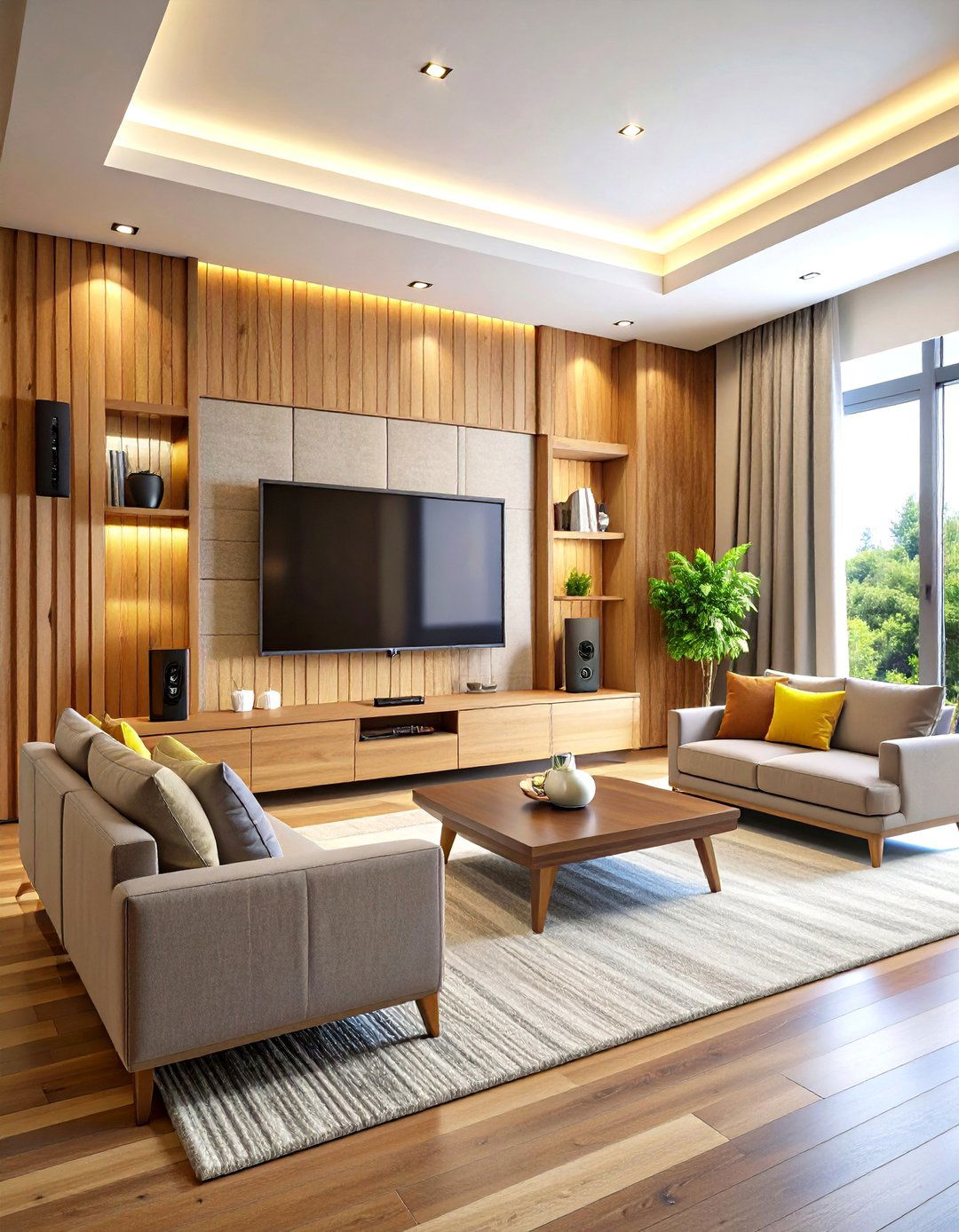
Incorporate decorative acoustic panels on walls surrounding the TV to improve sound clarity. Panels come in fabric-wrapped panels, wood slats, or perforated designs that absorb echo and reduce reverberation. Choose patterns and colors that complement the room’s palette. Beyond function, acoustic treatment elevates the design by adding texture and depth to the walls
18. Double-Duty Bar Cart
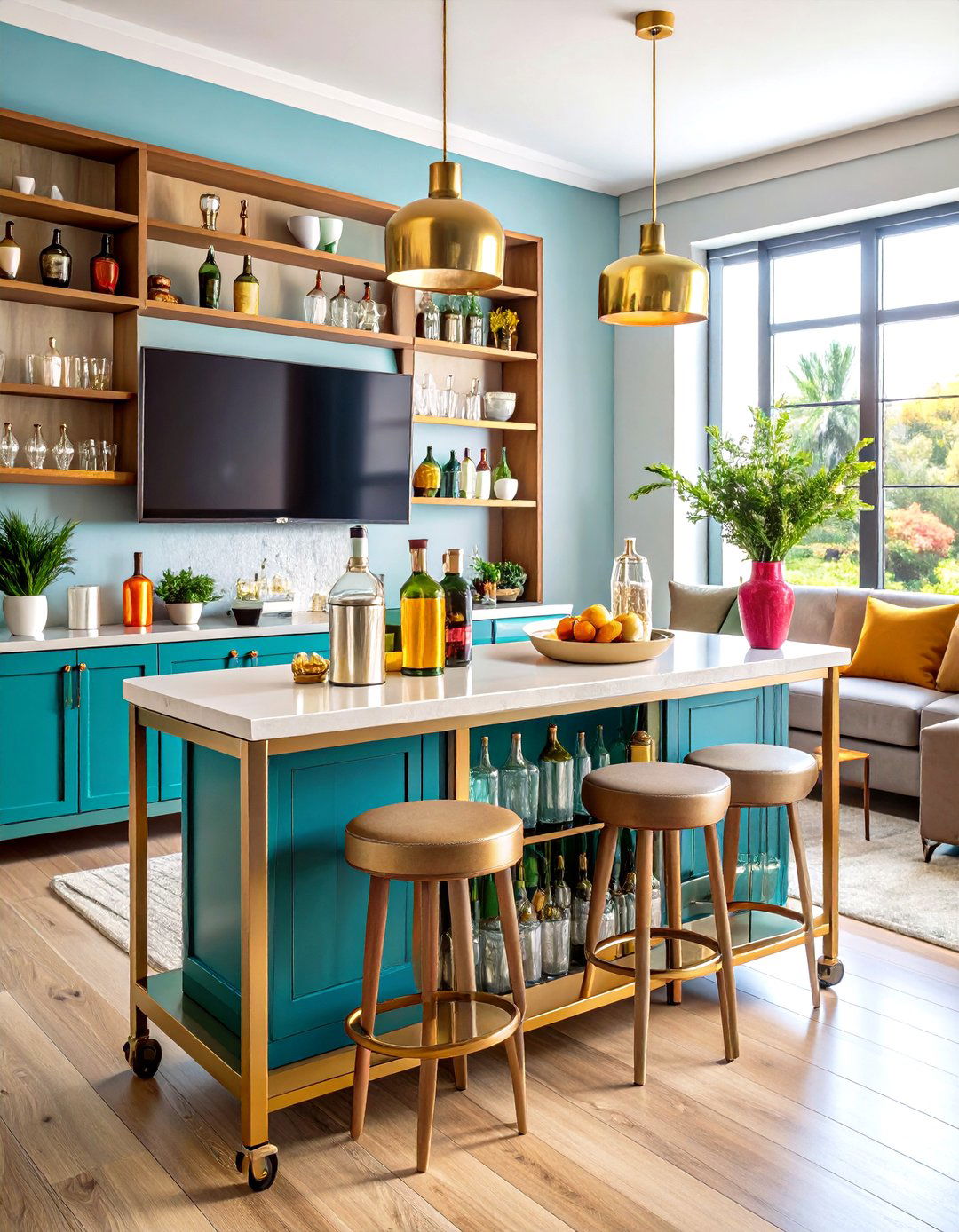
Position a stylish bar cart near the TV area to serve refreshments during movie marathons. Stock with glassware, mixers, and a selection of beverages. Use decorative trays and coasters that echo the room’s color scheme. A bar cart adds functional flair, encouraging hospitality without requiring permanent cabinetry or space-consuming built-ins
19. Statement Ceiling Fixture
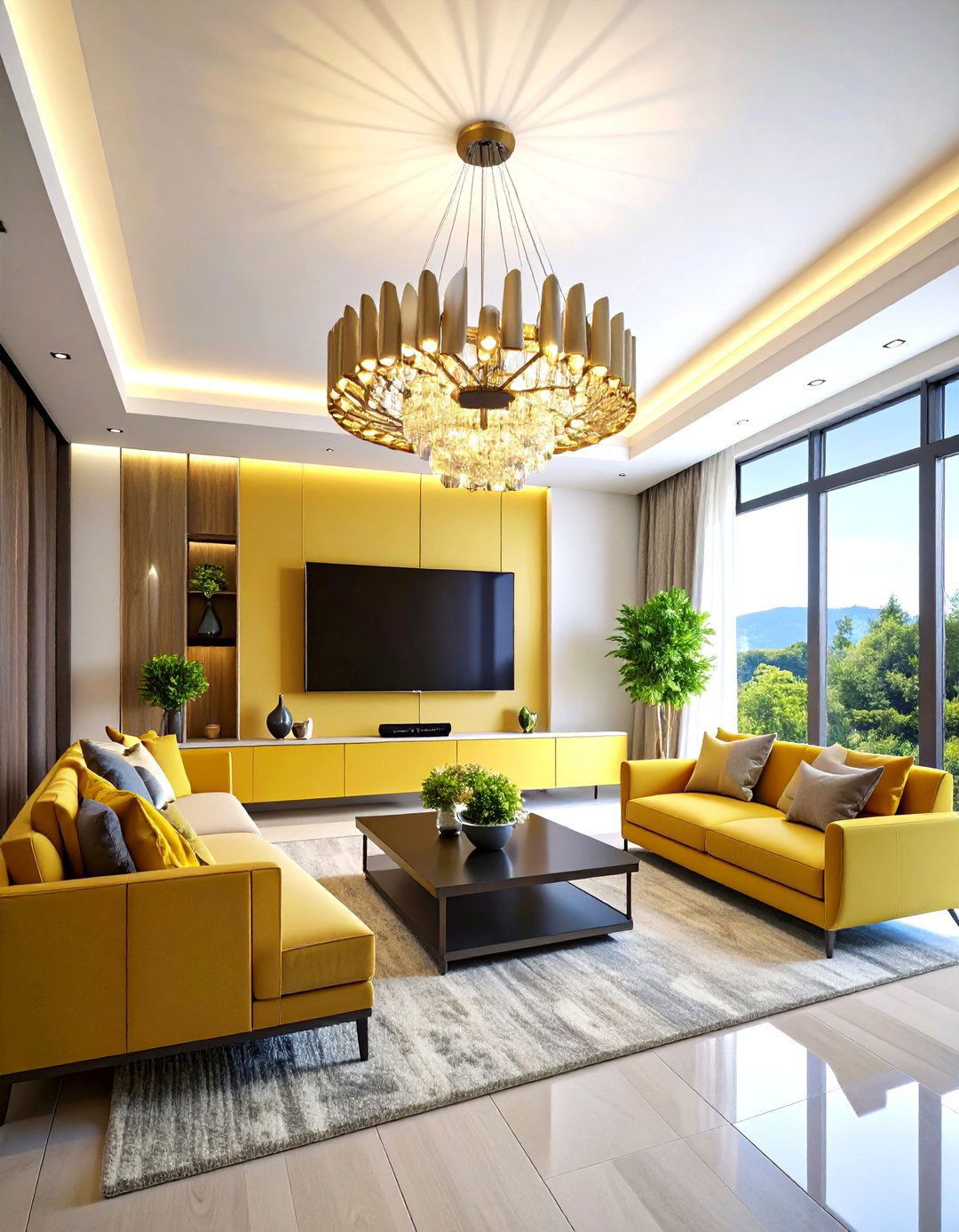
A dramatic chandelier or sculptural pendant light infuses personality above the seating zone. Select a fixture that complements the TV wall design—mid-century globes for retro rooms, geometric metal forms for modern spaces, or crystal for glam decors. Ensure the fixture’s height clears viewing lines and doesn’t cast glare on the screen. Overhead statement lighting unifies the room’s aesthetic and draws eyes upward when the TV is off
20. Monochromatic Minimalism
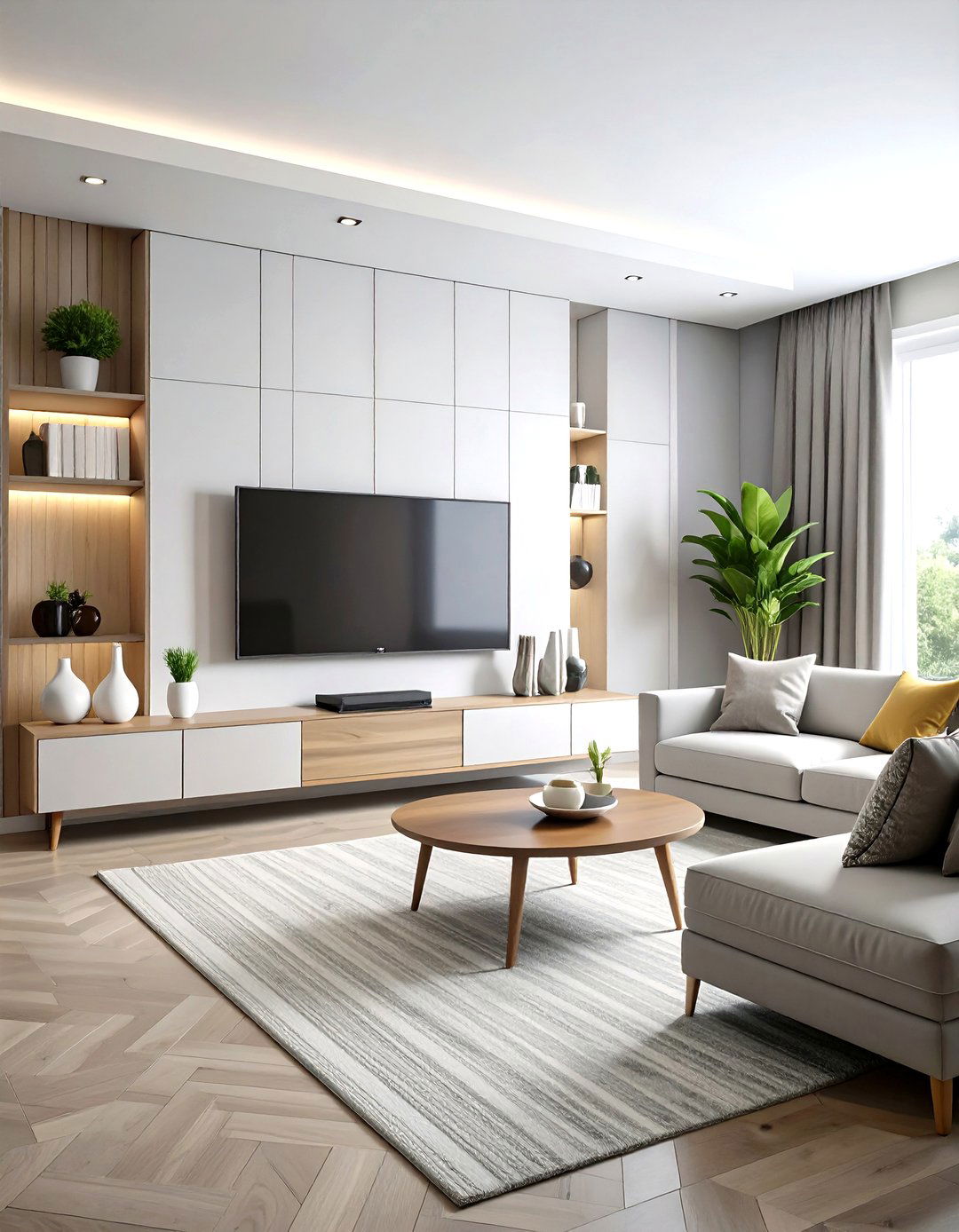
Adopt a monochrome palette—shades of gray, white, or beige—to create a serene media room. Consistent tones on walls, furniture, and floors streamline the space, making the TV stand out only when desired. Textured fabrics and subtle pattern variations prevent the scheme from feeling flat. This disciplined approach works especially well in open-plan layouts, where the TV area gracefully integrates with adjoining zones
Conclusion:
By thoughtfully integrating technology, storage, seating, and décor, you can transform any space into a TV room that balances style with functionality. Whether you prefer built-in solutions or flexible furnishings, dark accent walls or gallery displays, there’s a design approach to suit every taste and footprint. From luxury velvet seating and projection setups to minimalist consoles and hidden TVs, these 20 ideas offer a comprehensive toolkit for crafting an inviting, immersive viewing environment that elevates everyday entertainment.


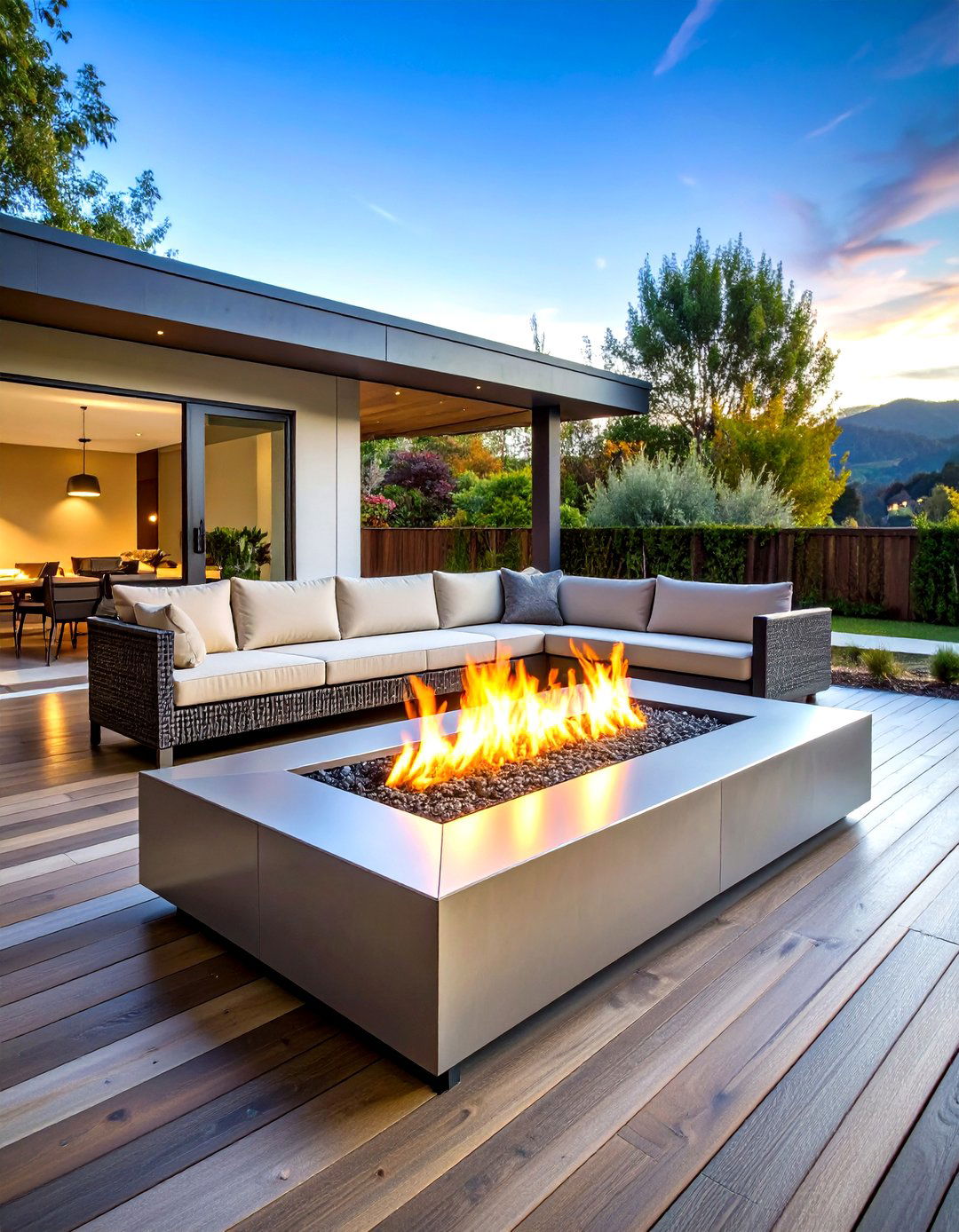
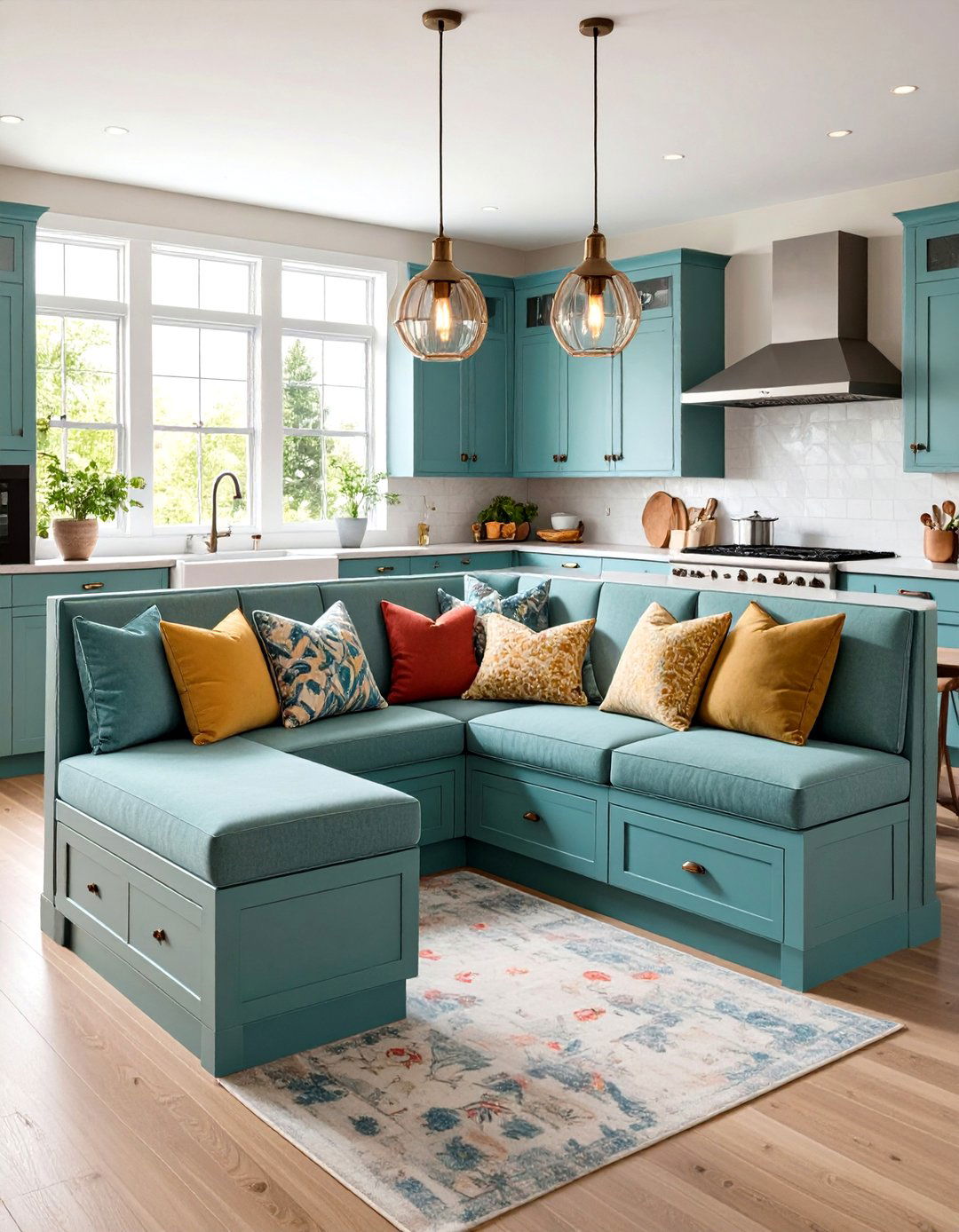
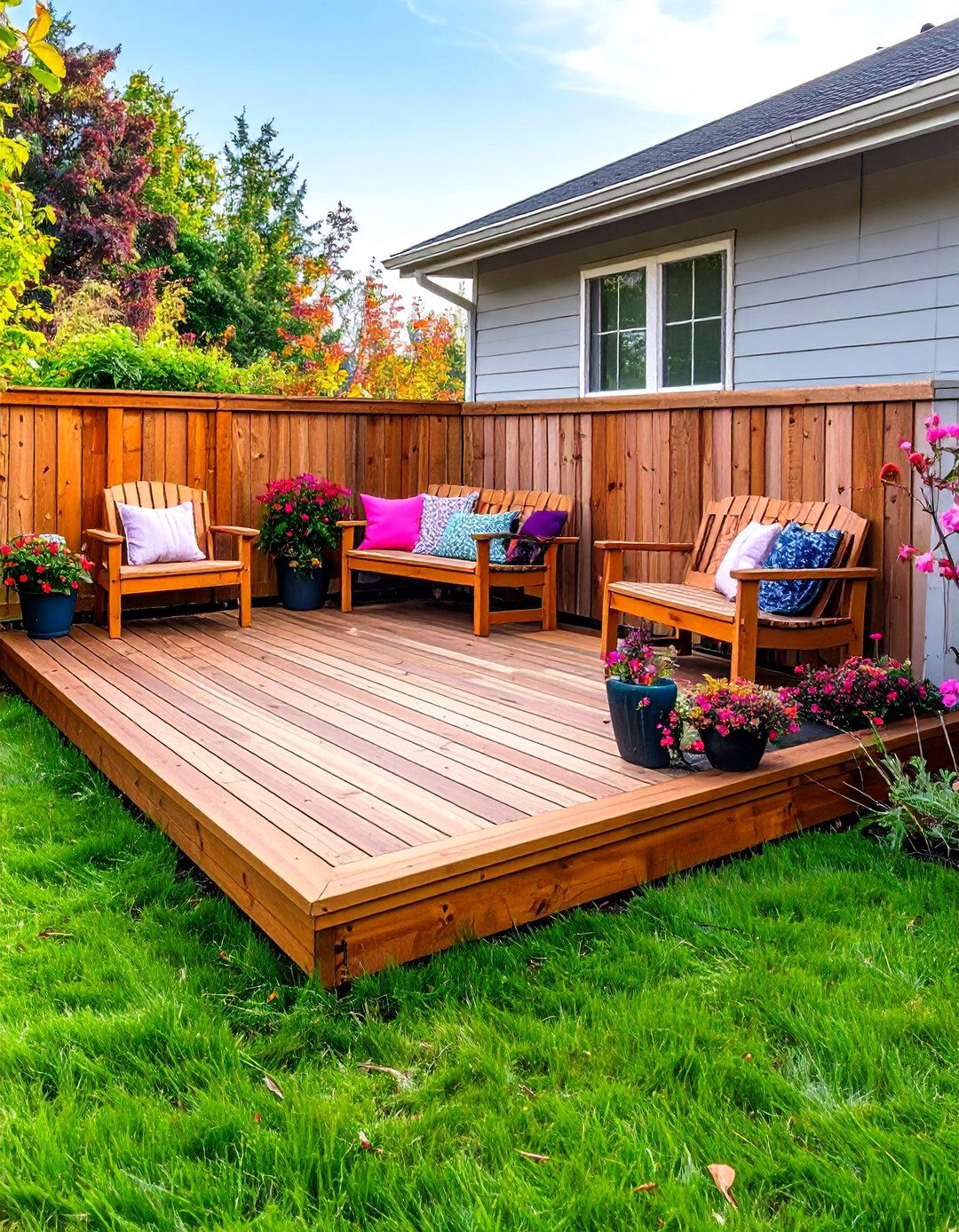
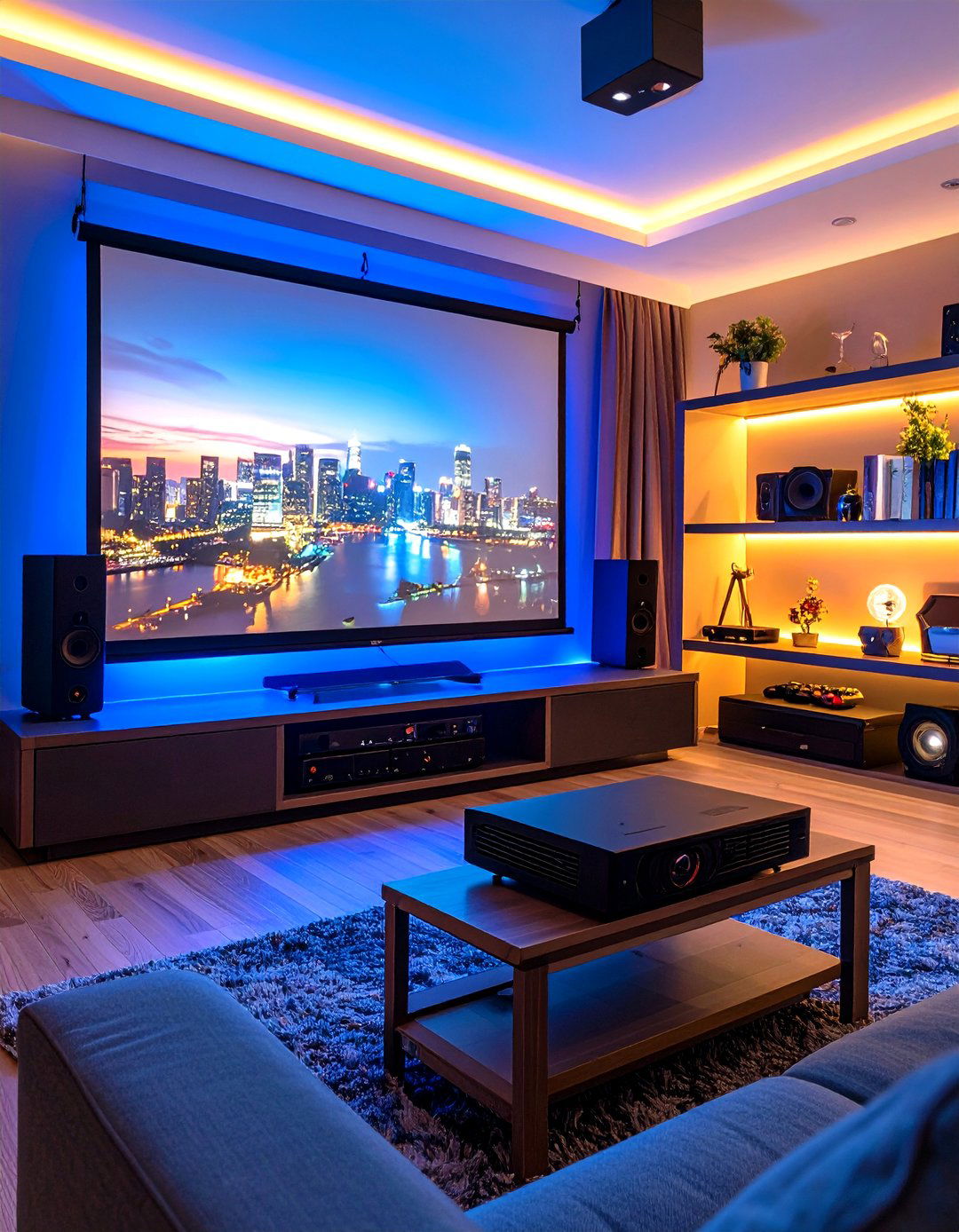
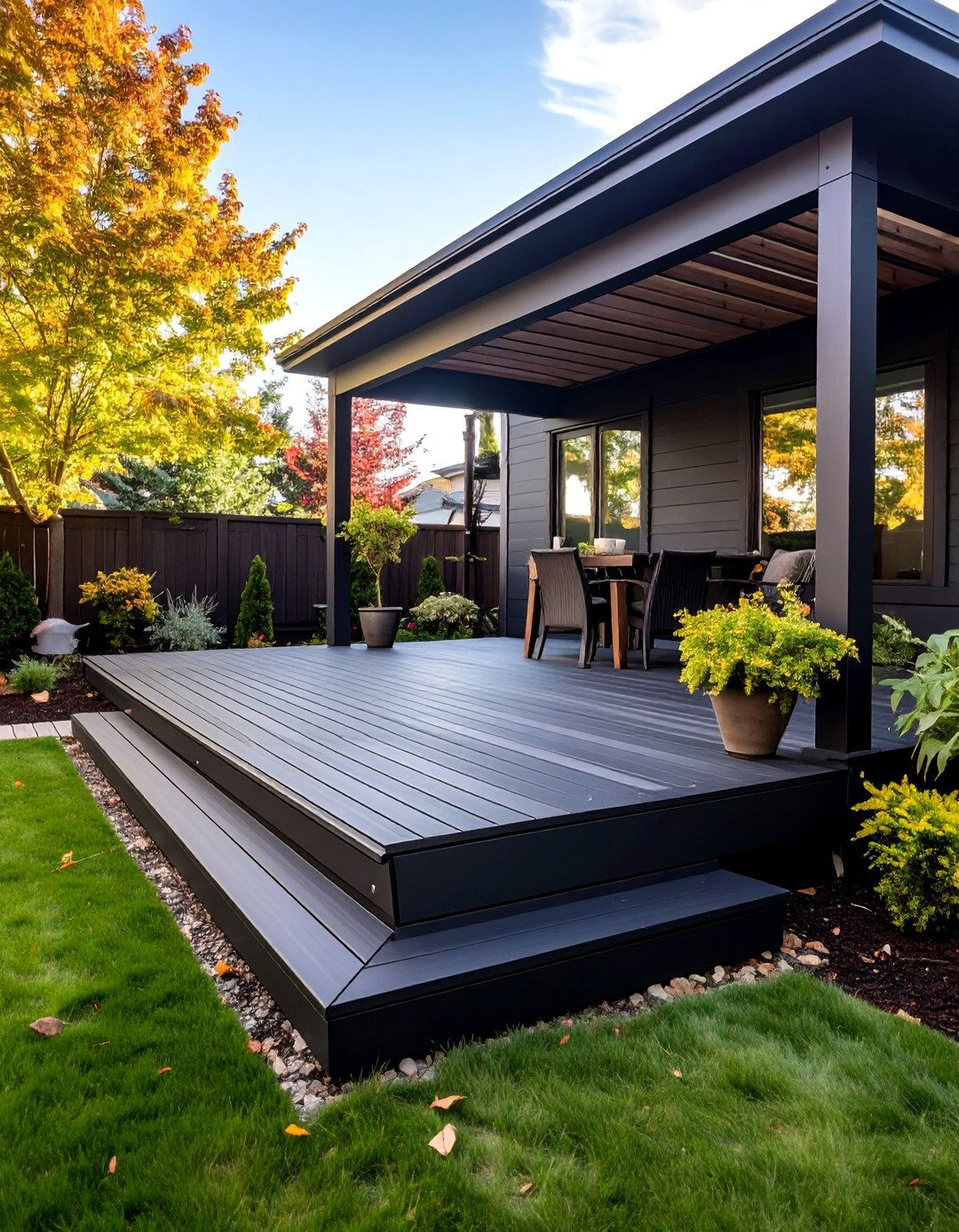
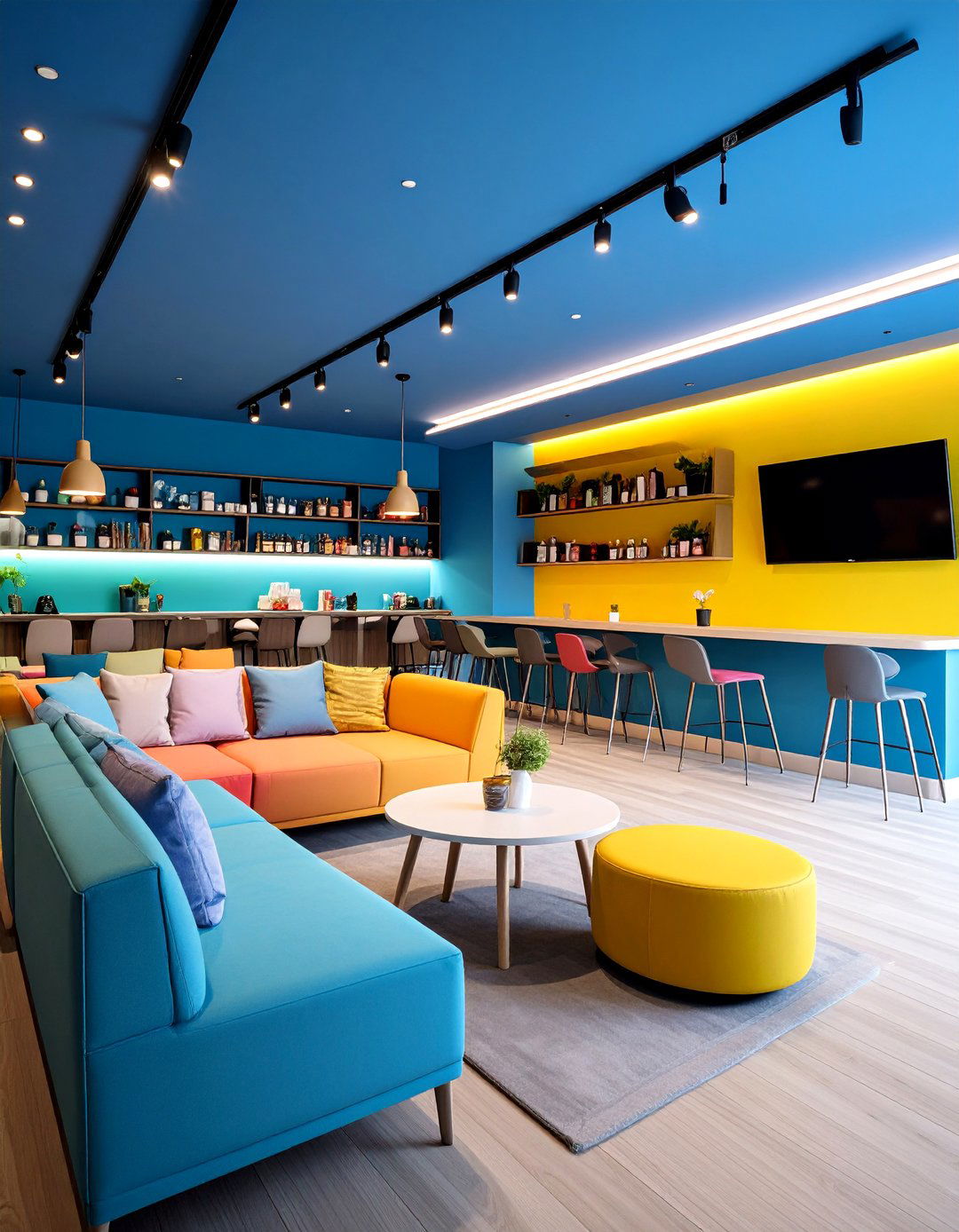
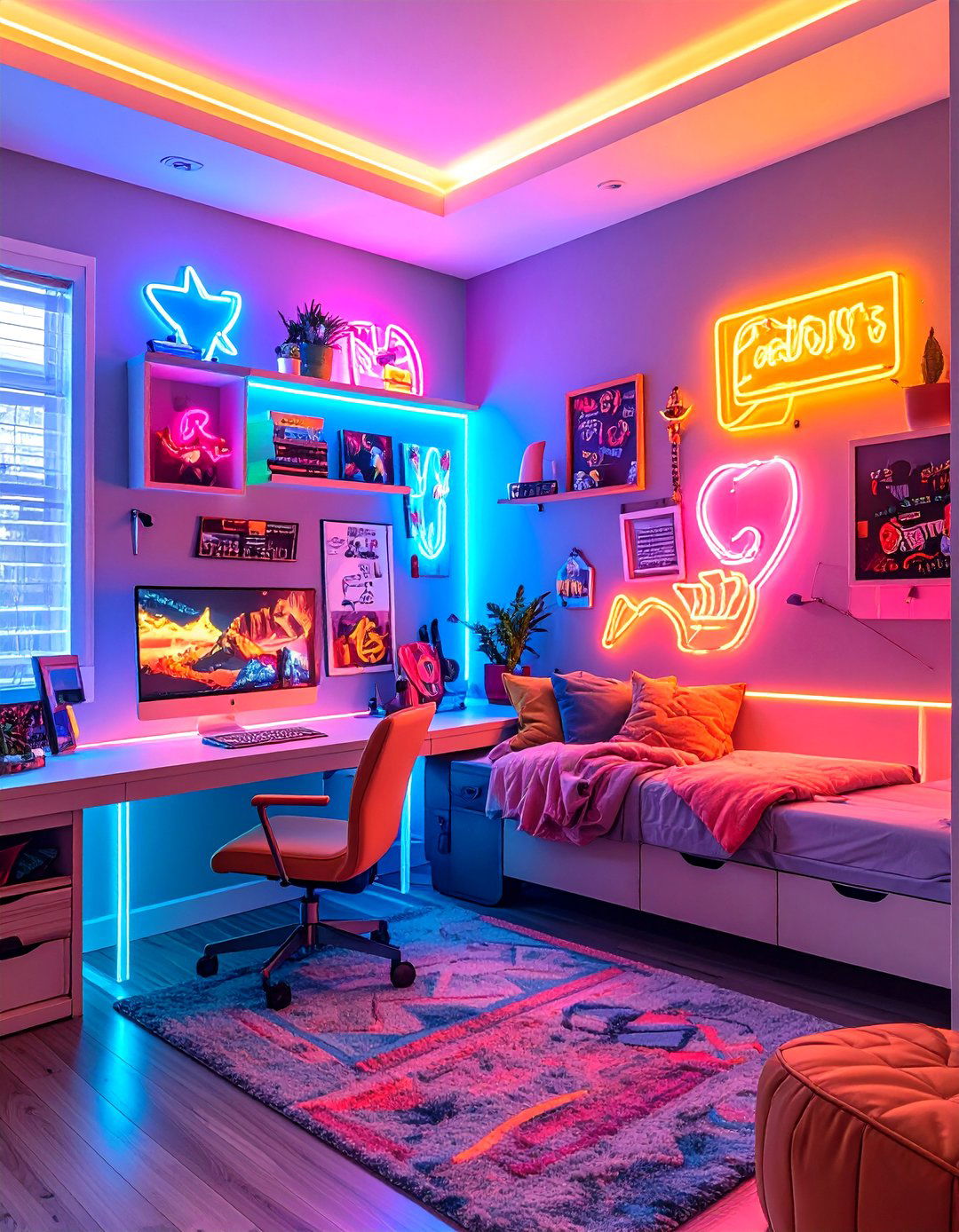

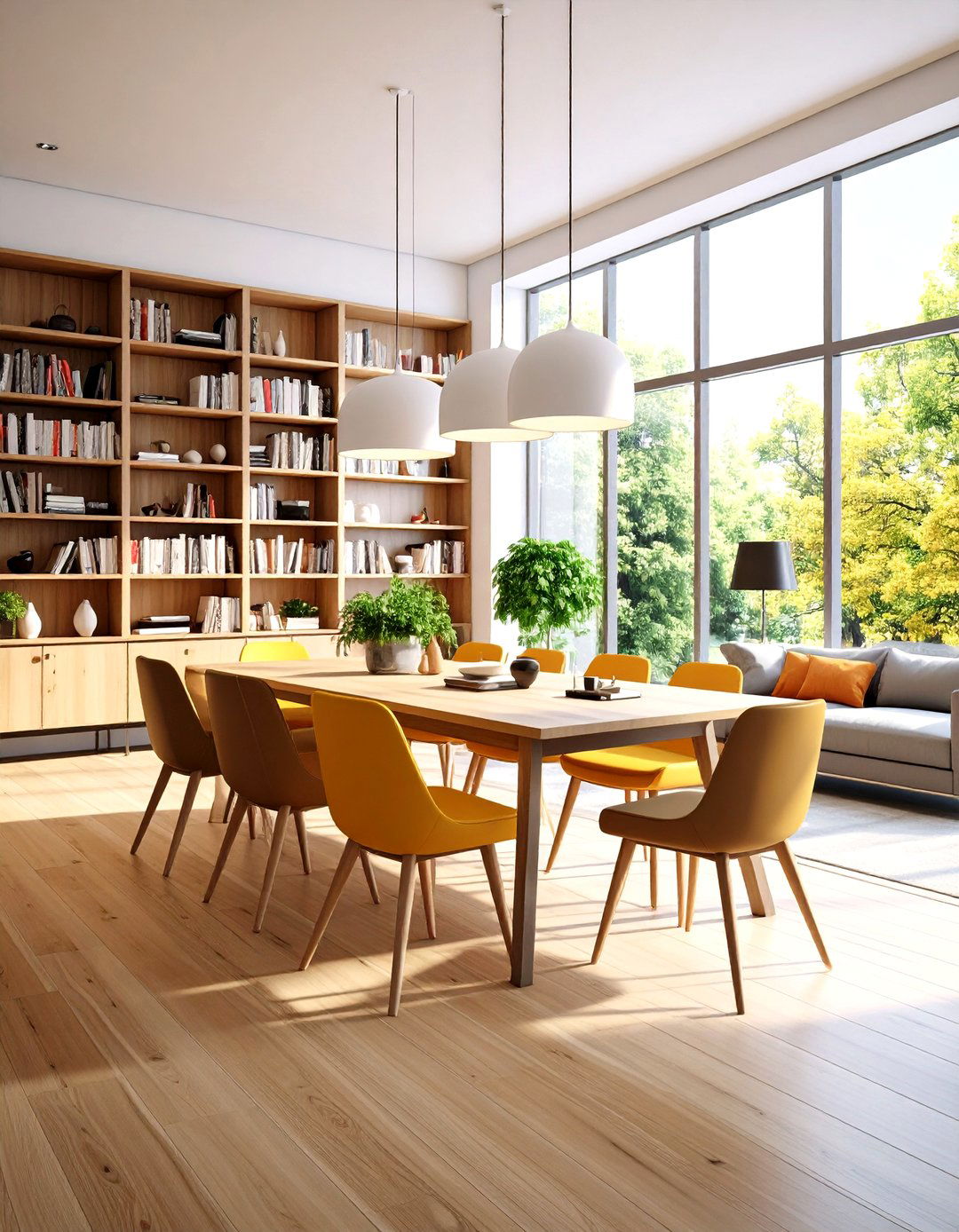
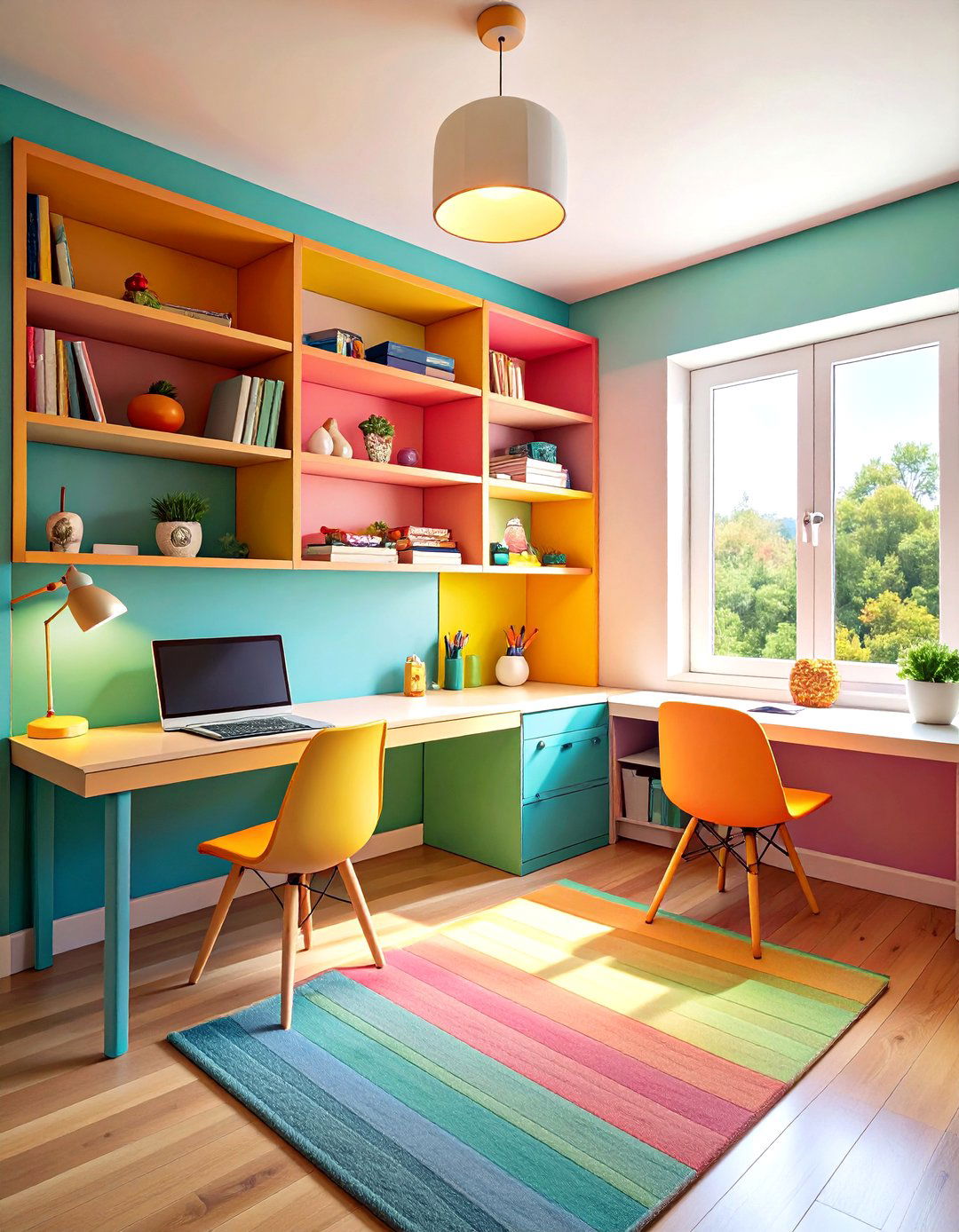

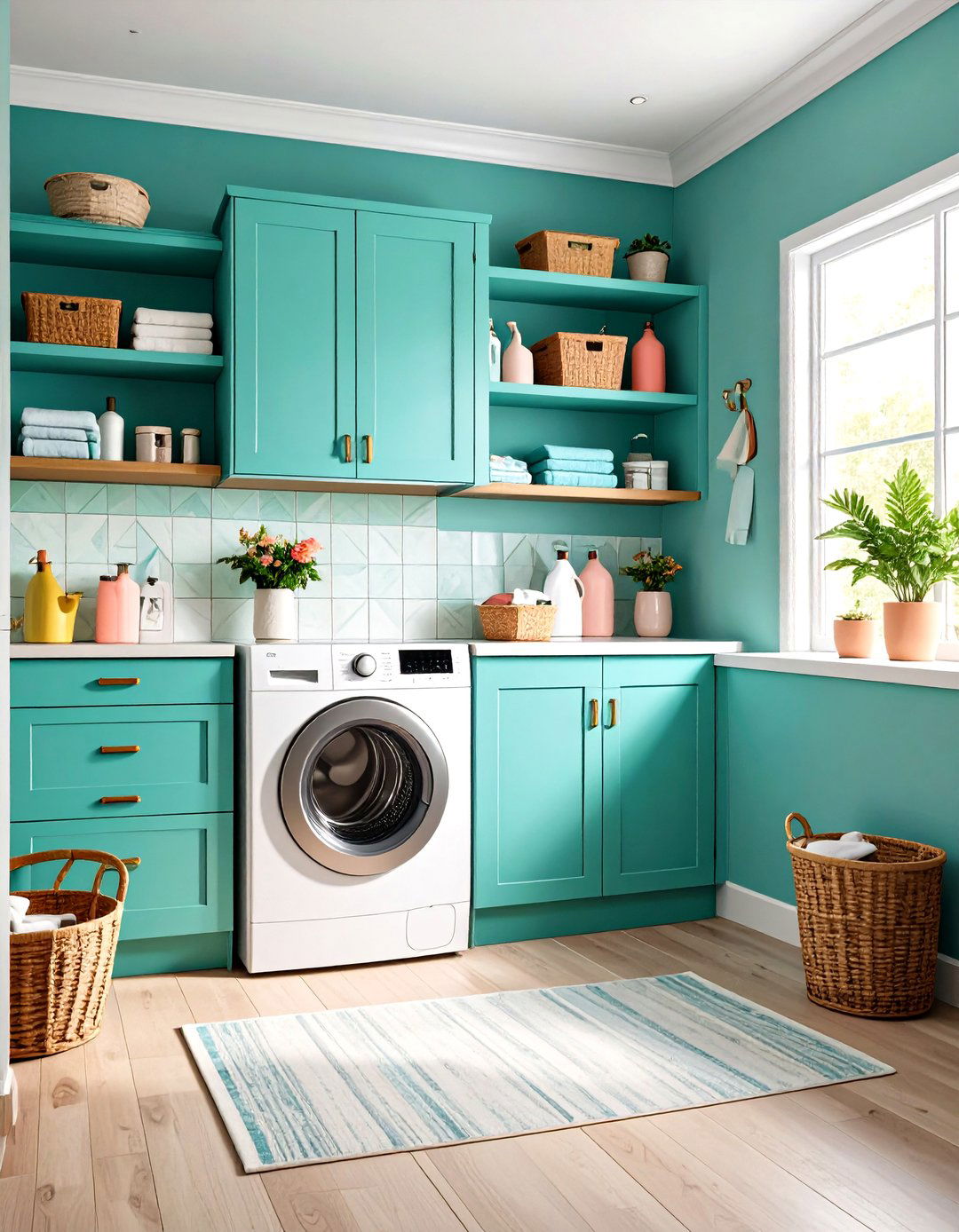

Leave a Reply